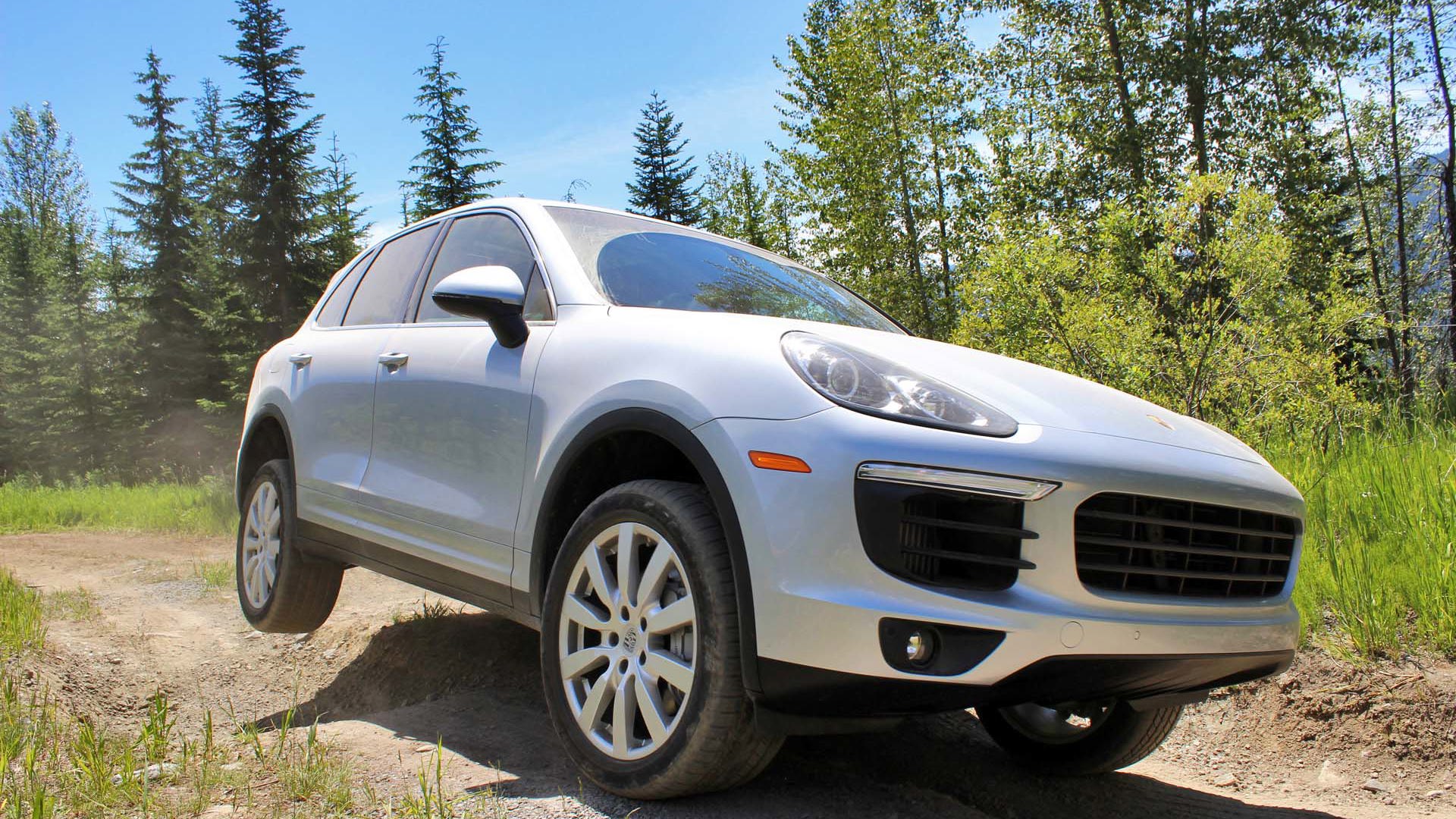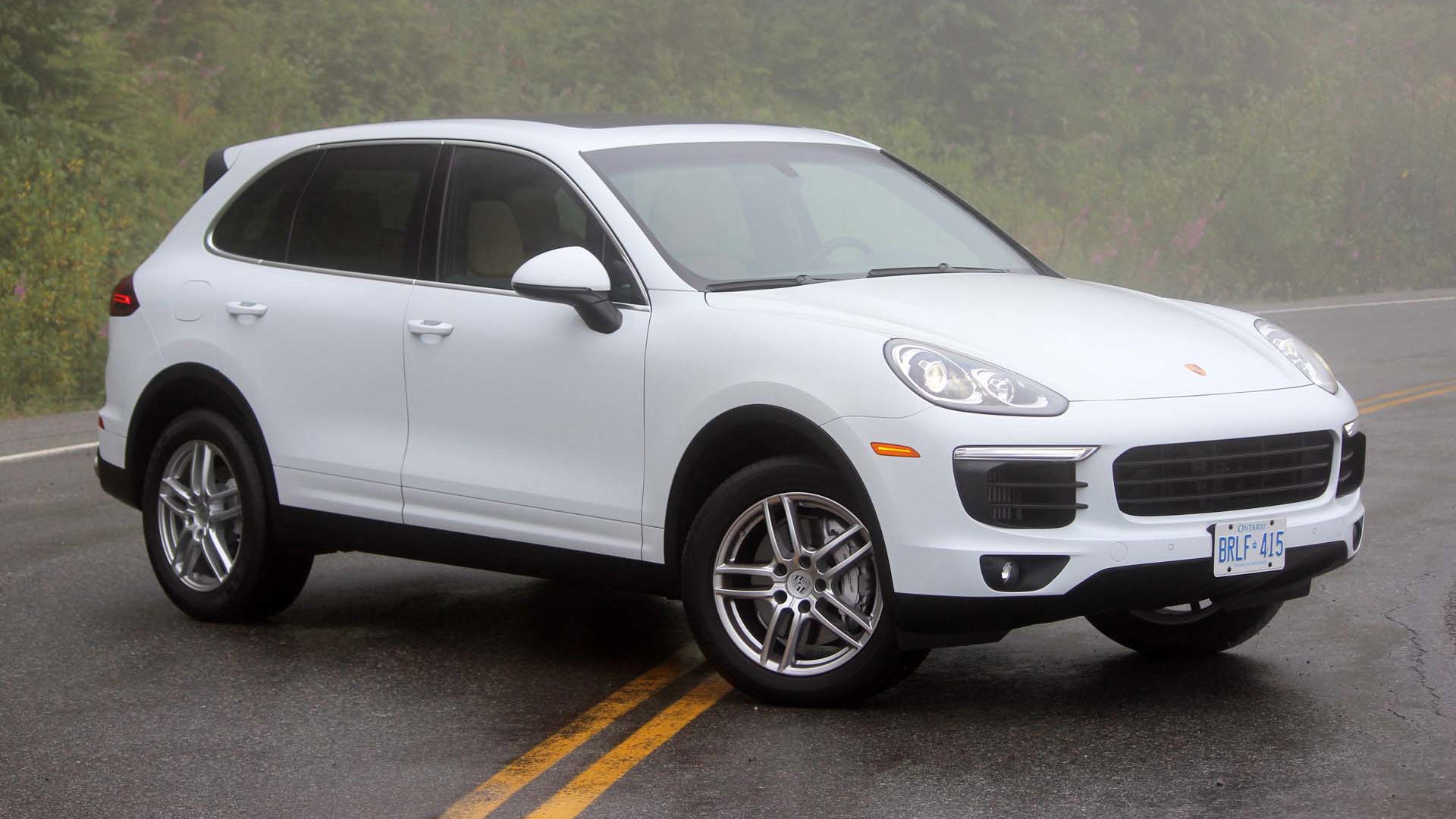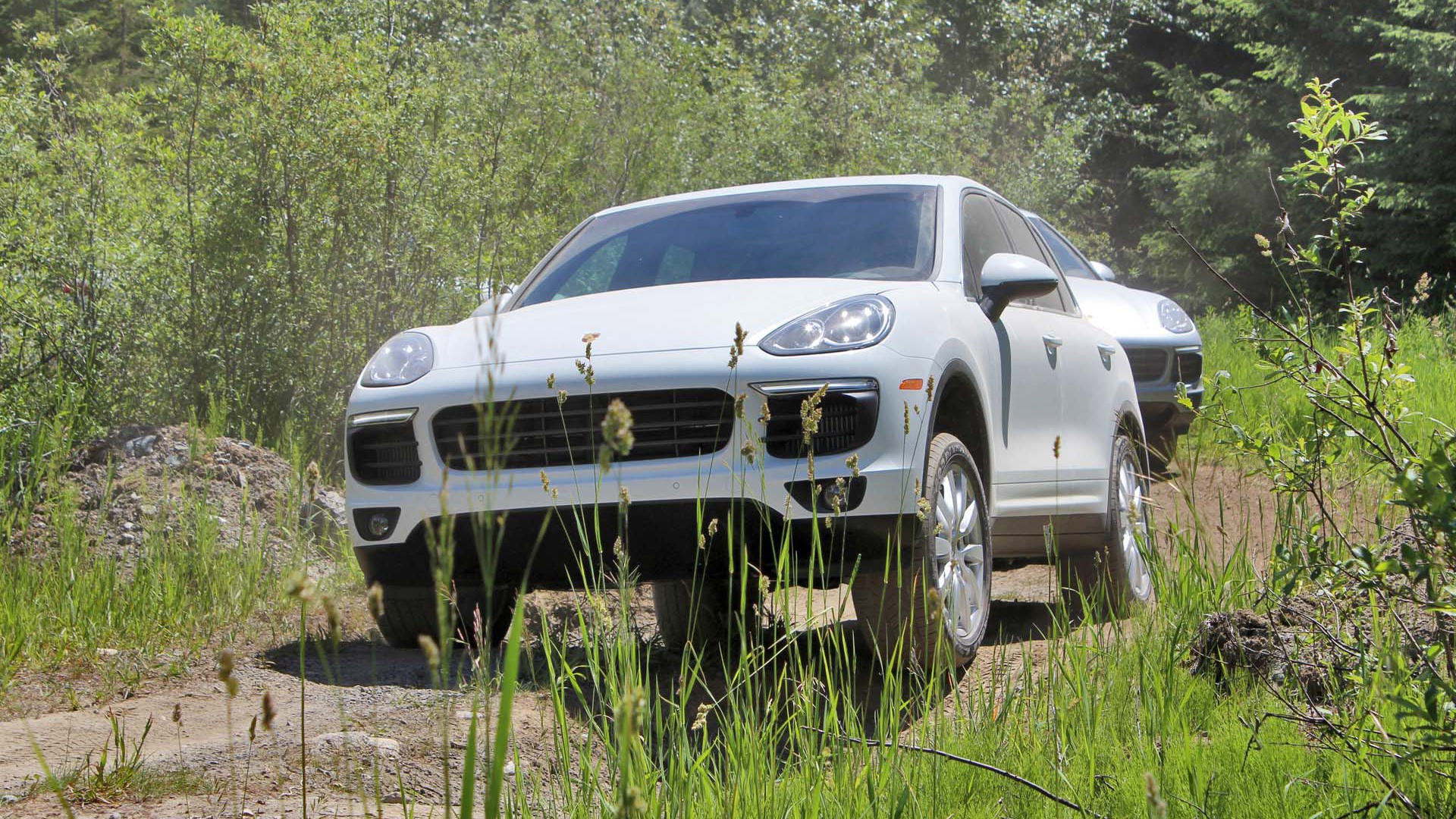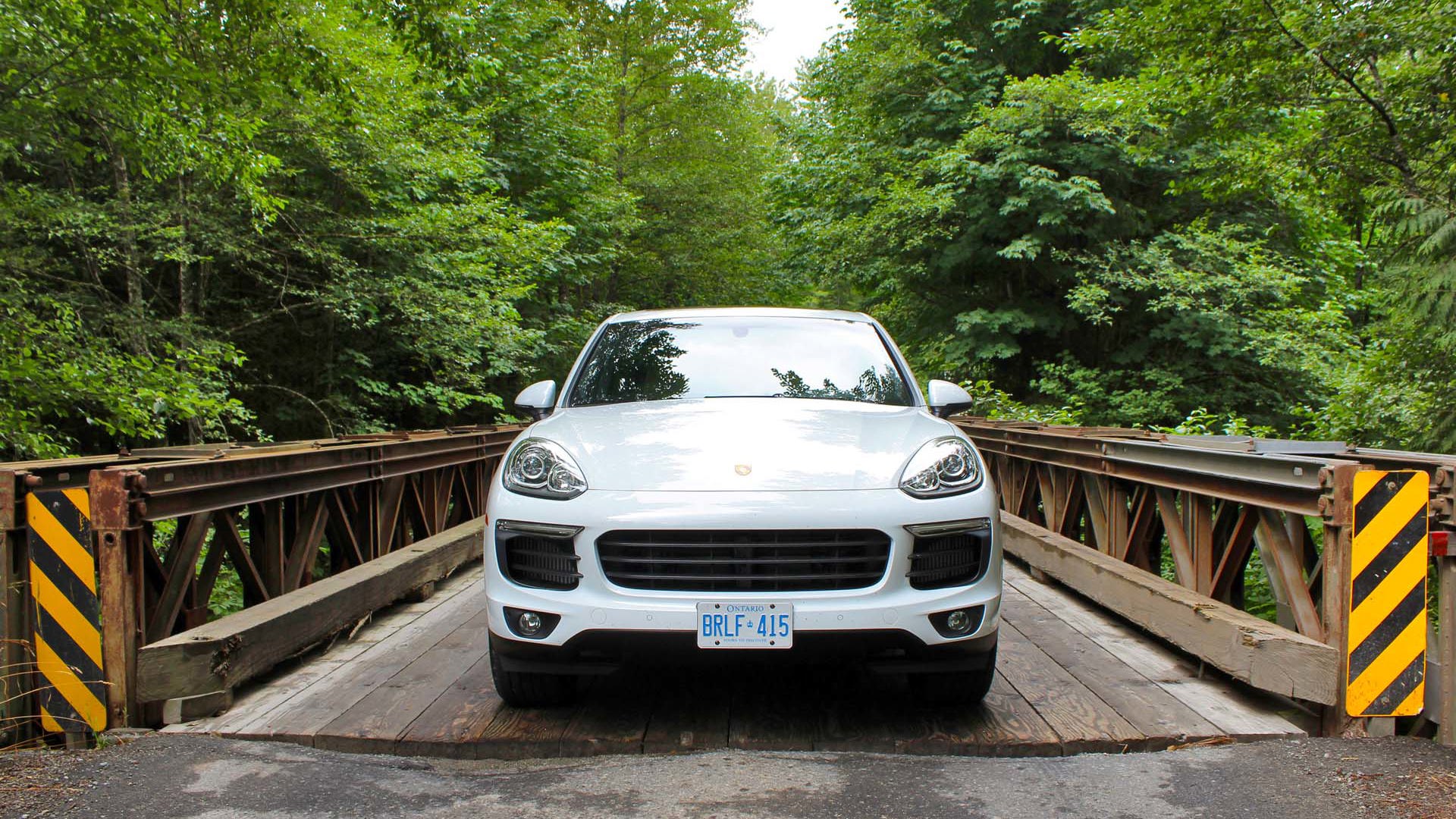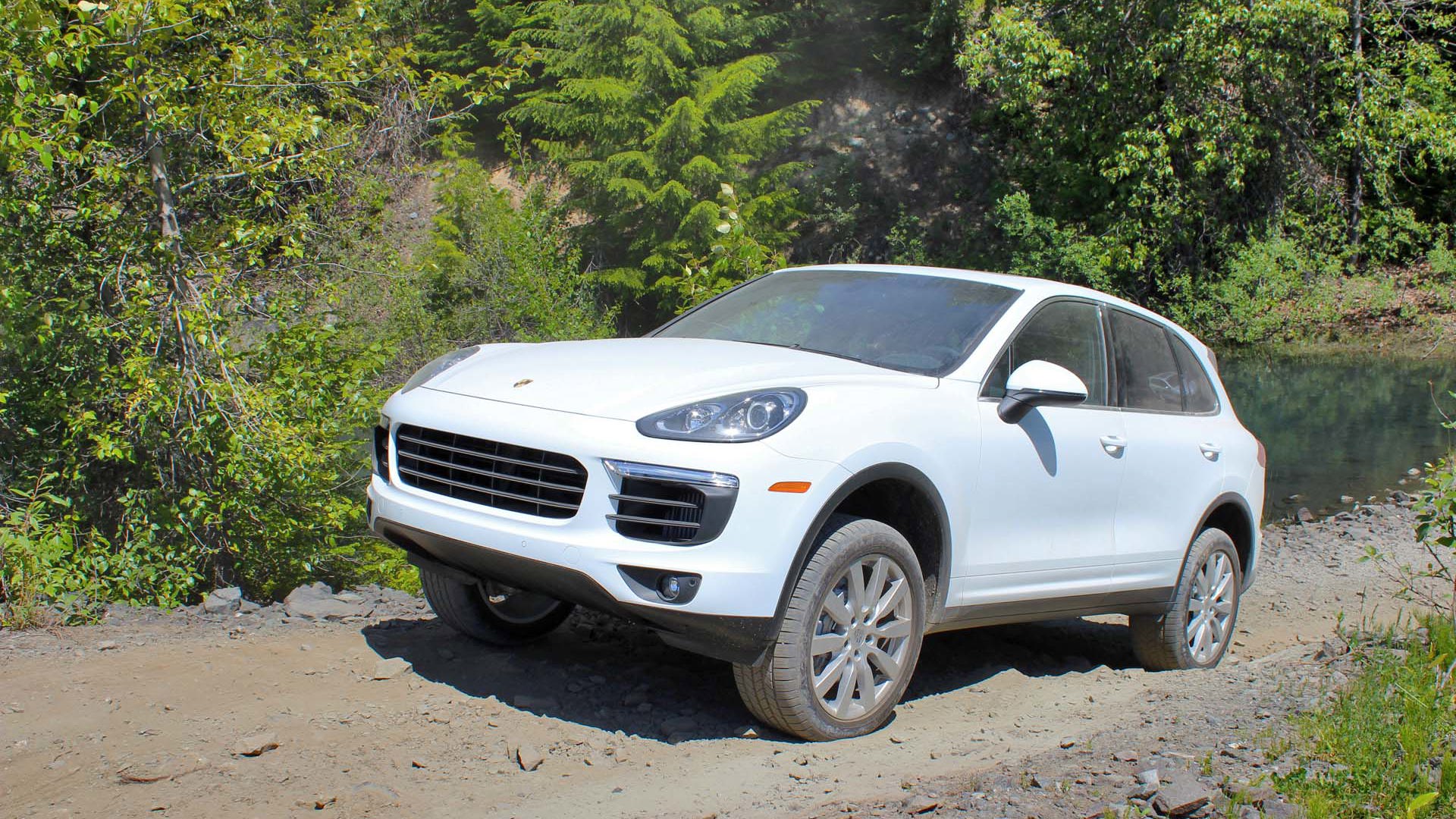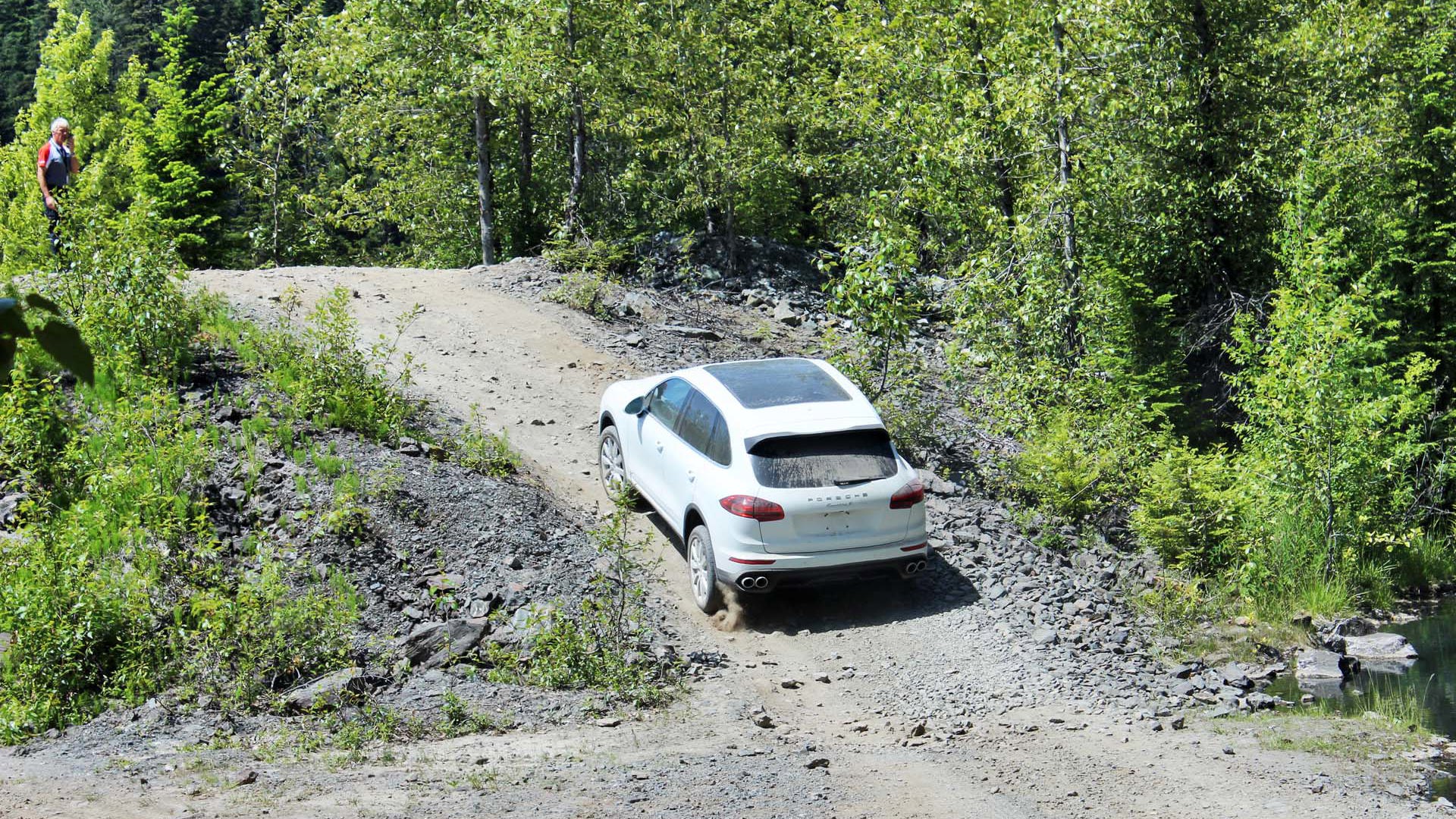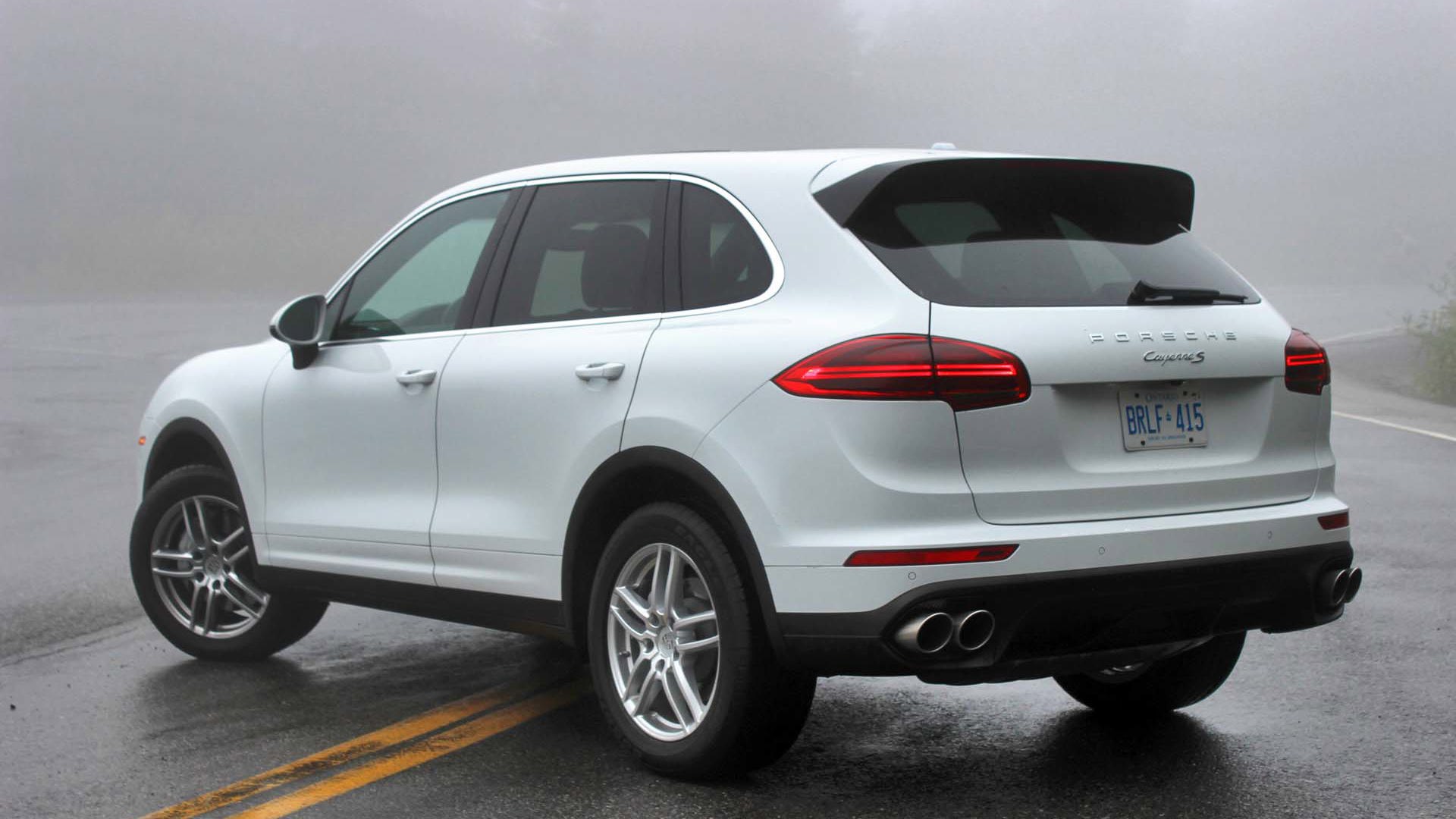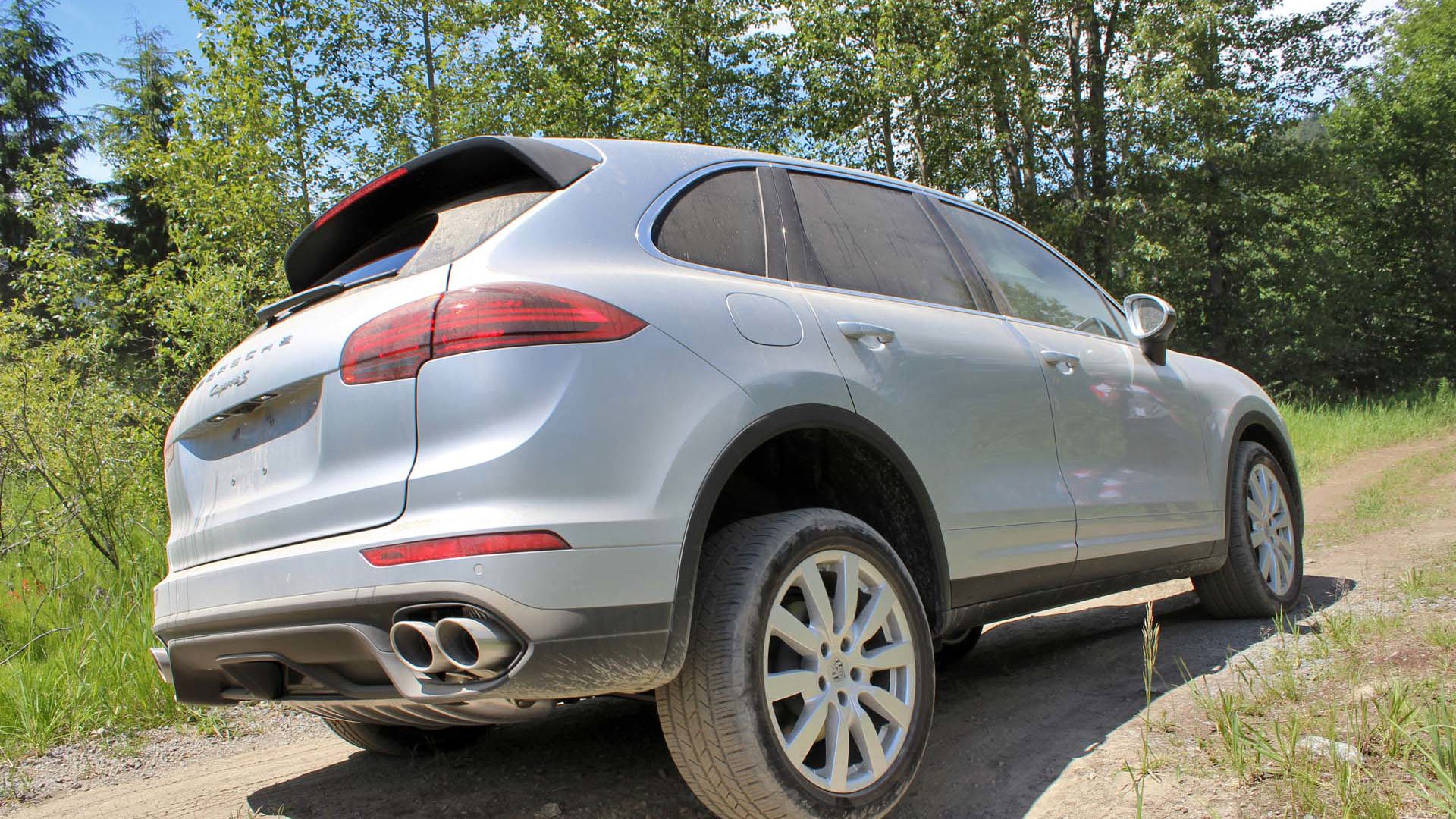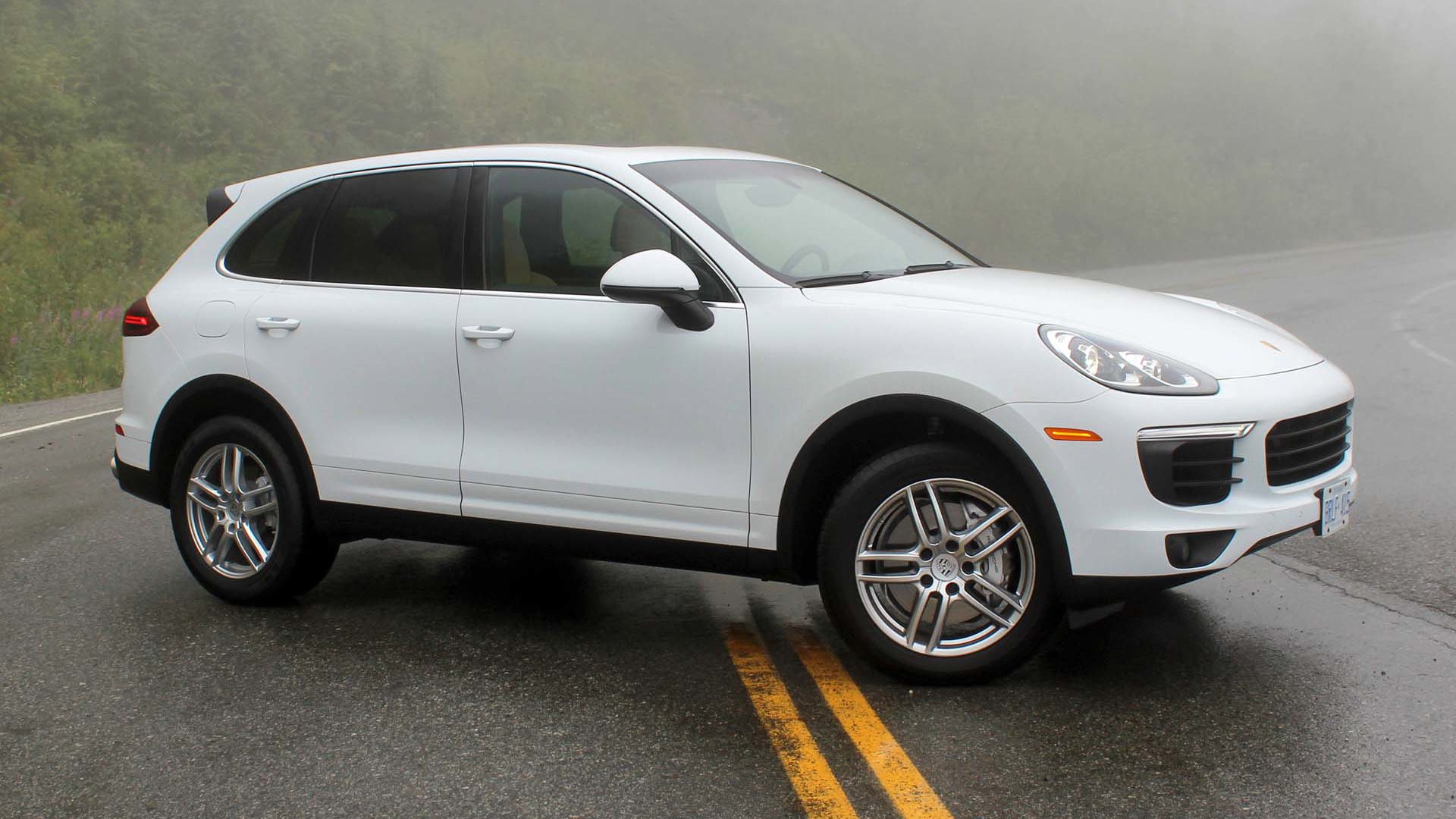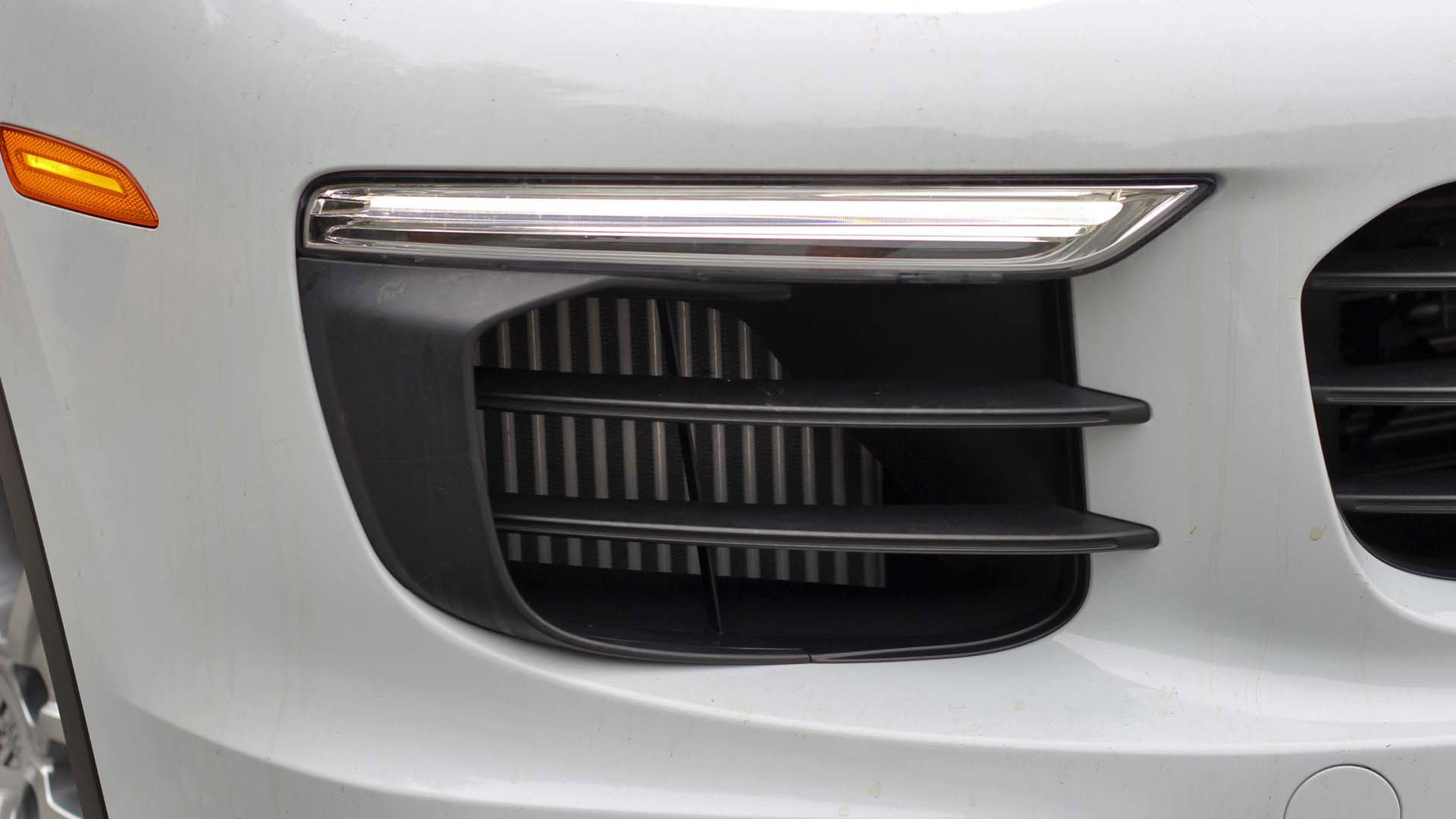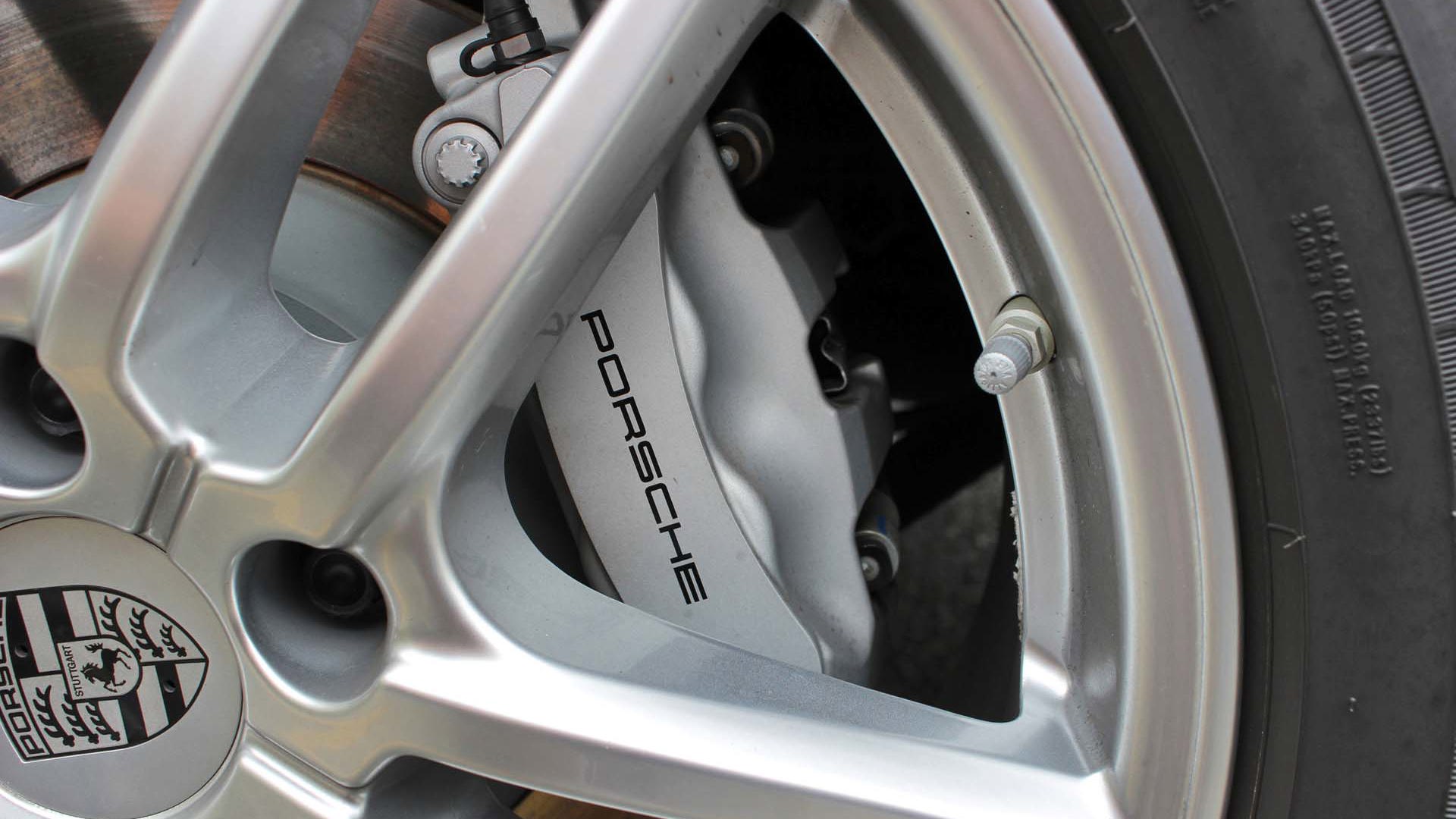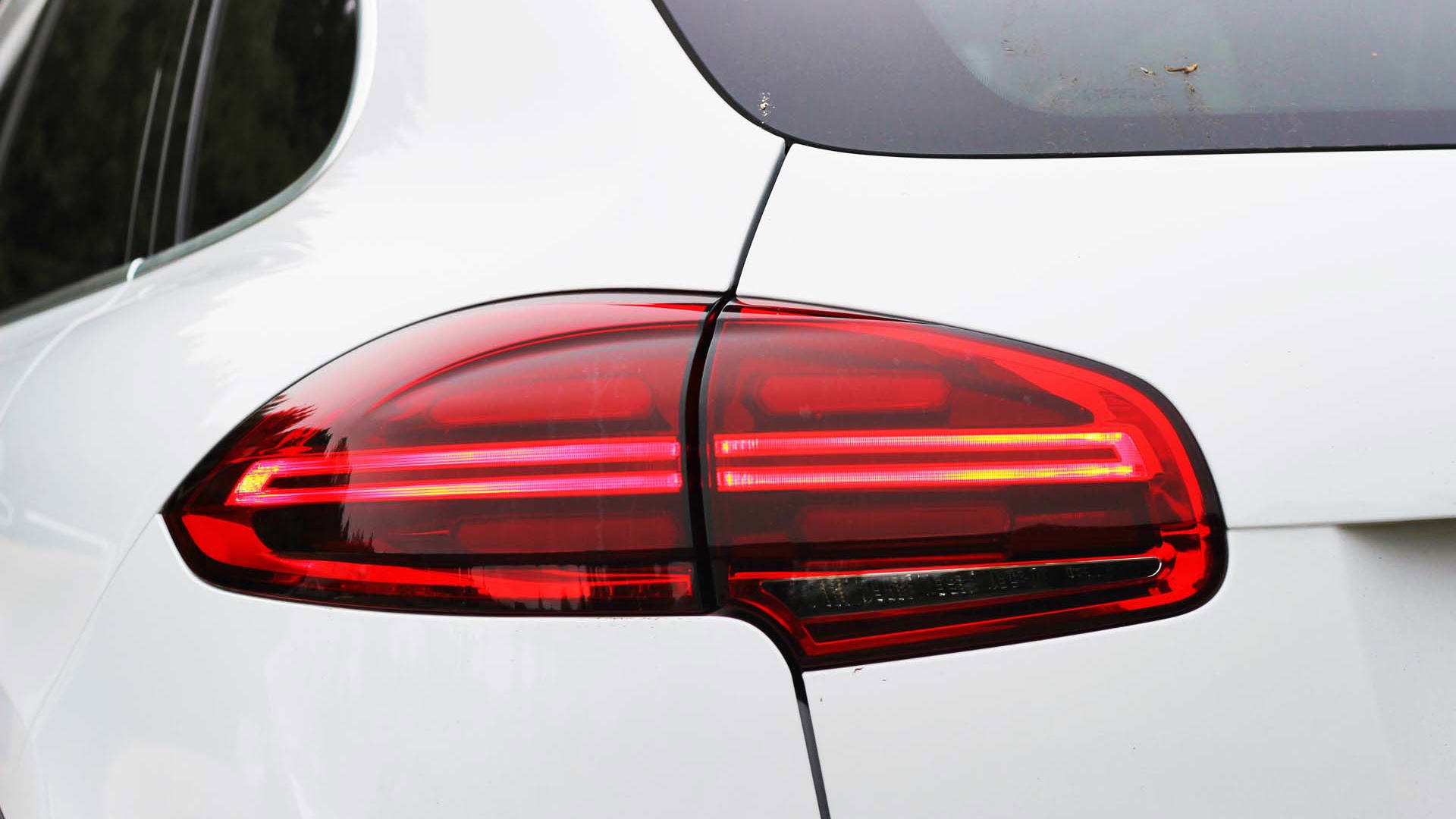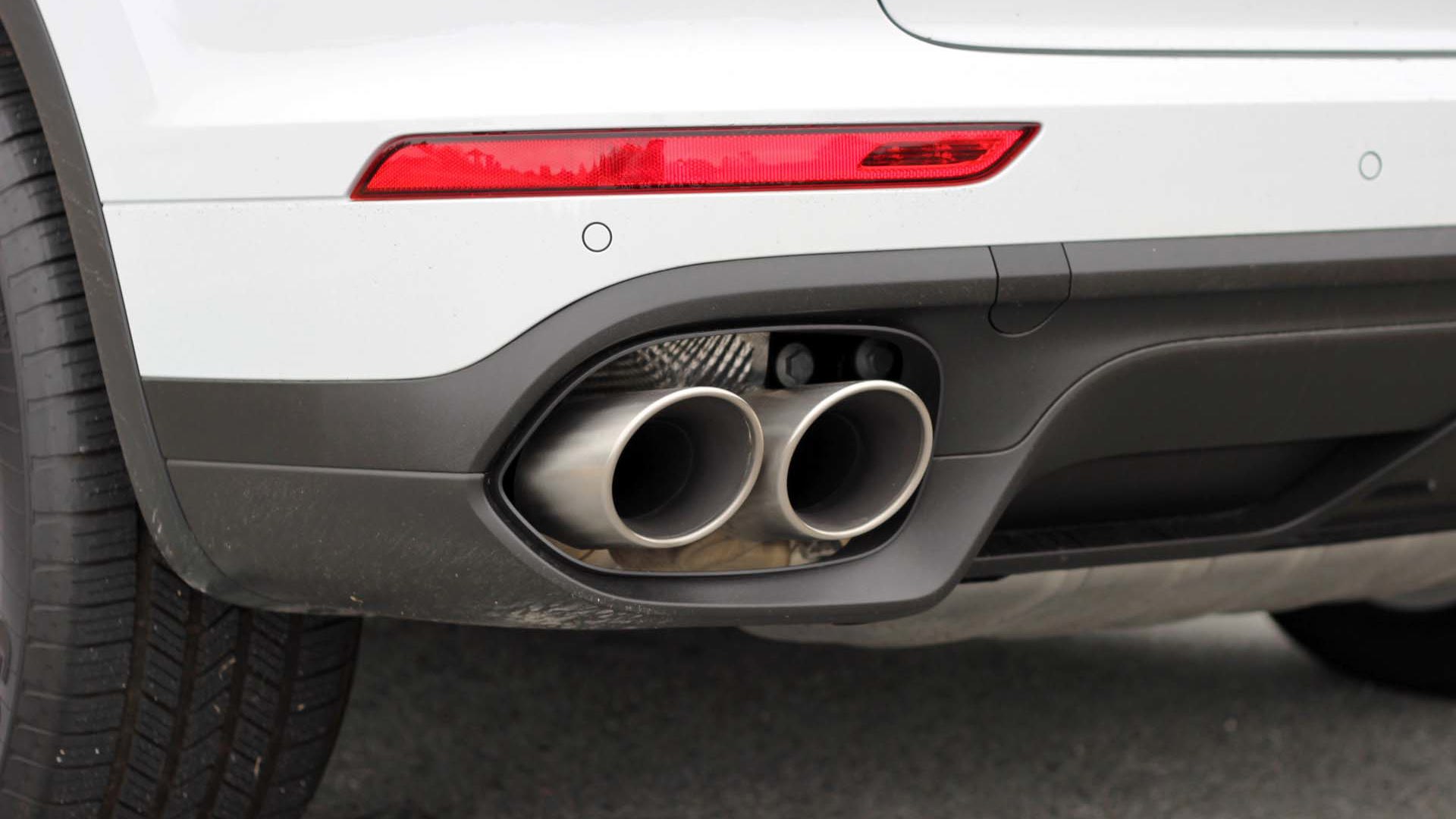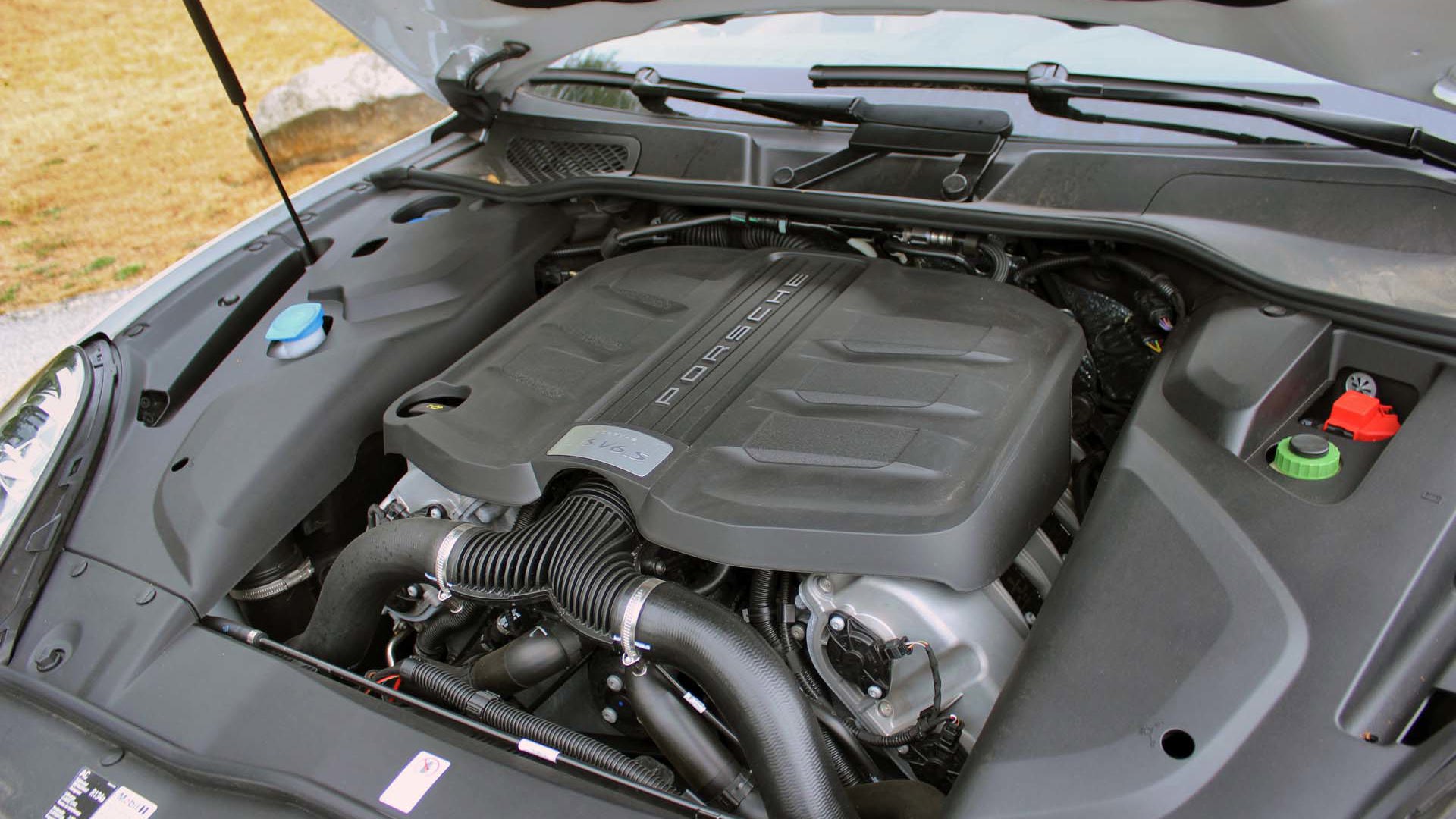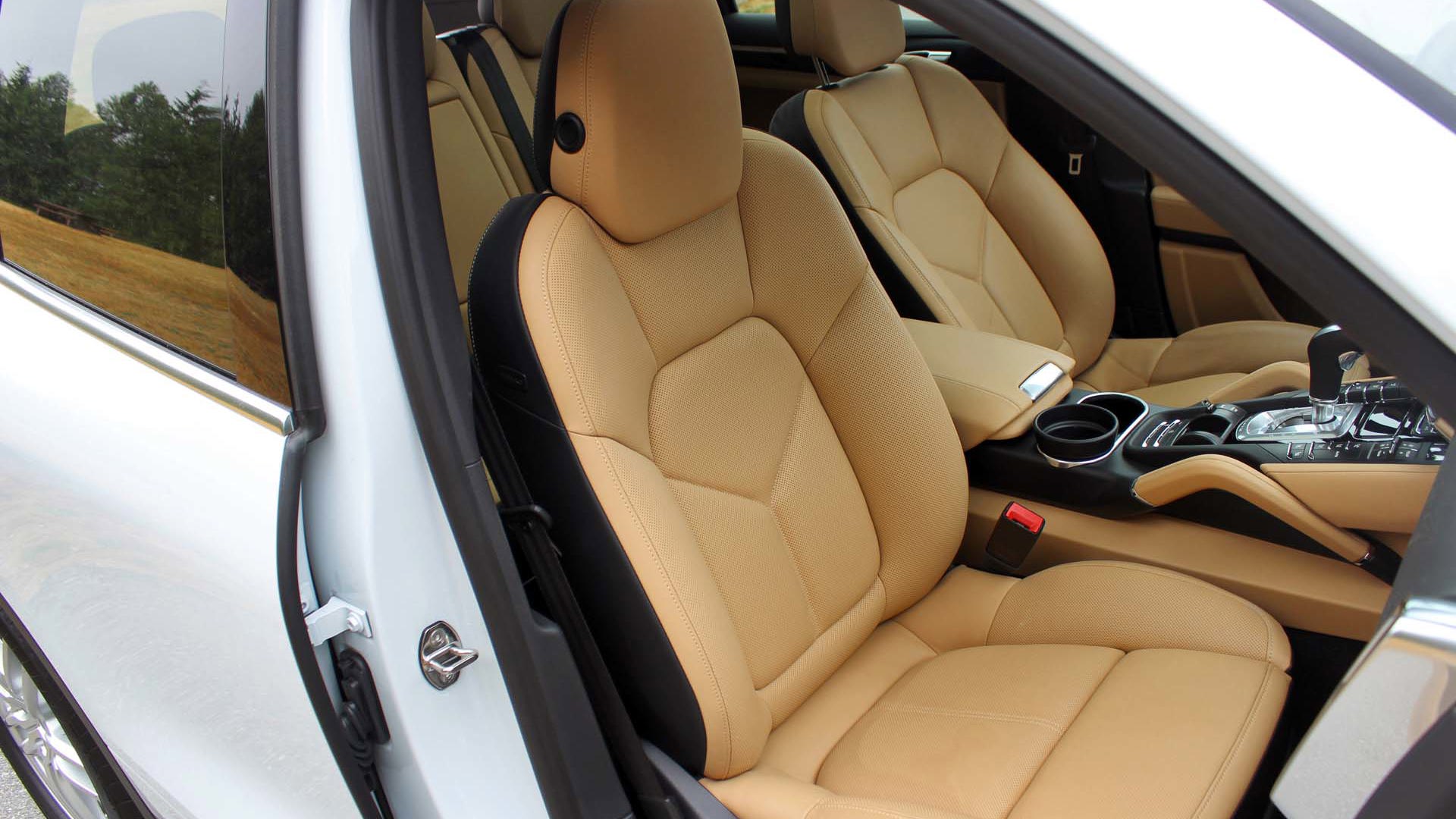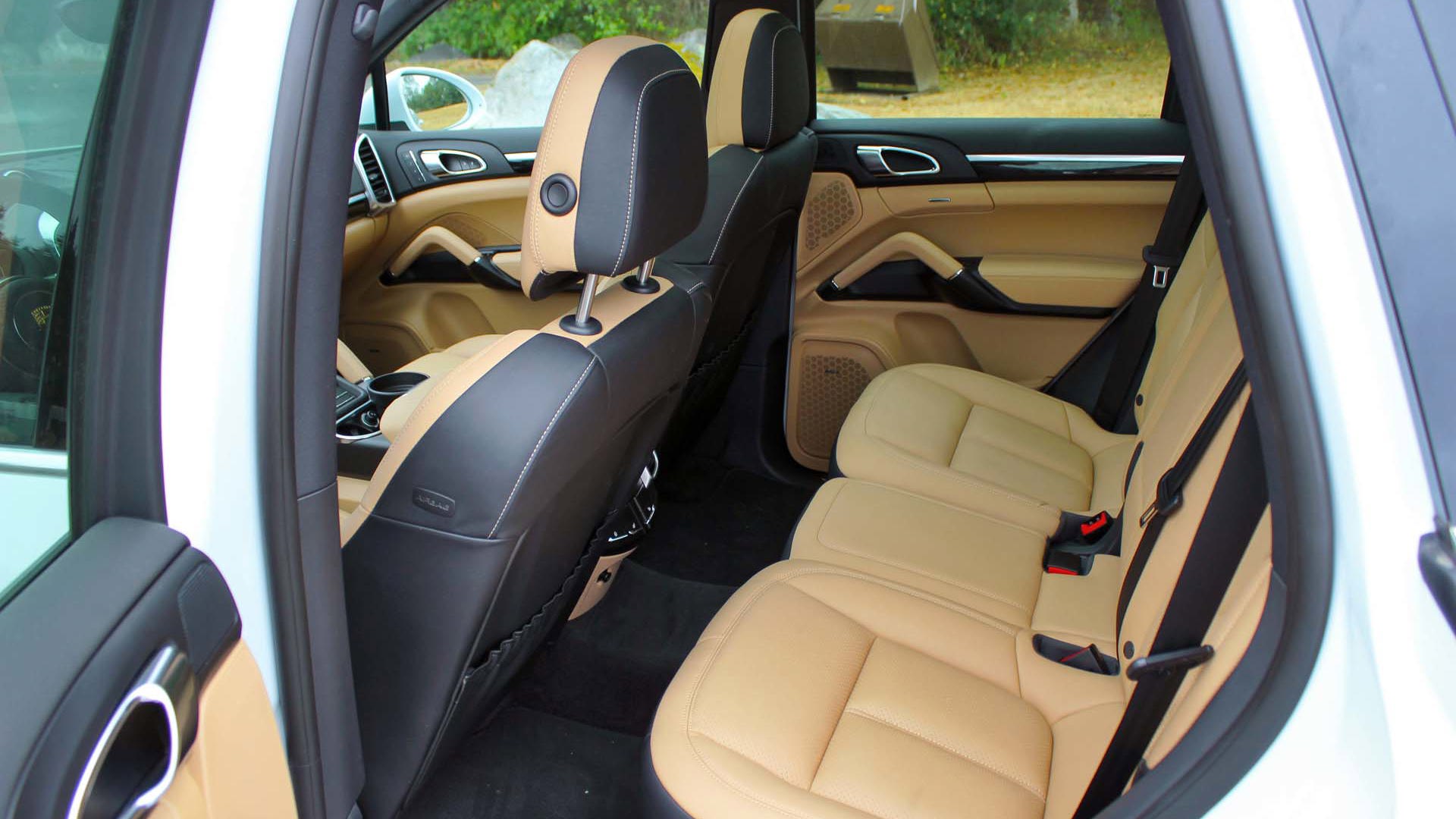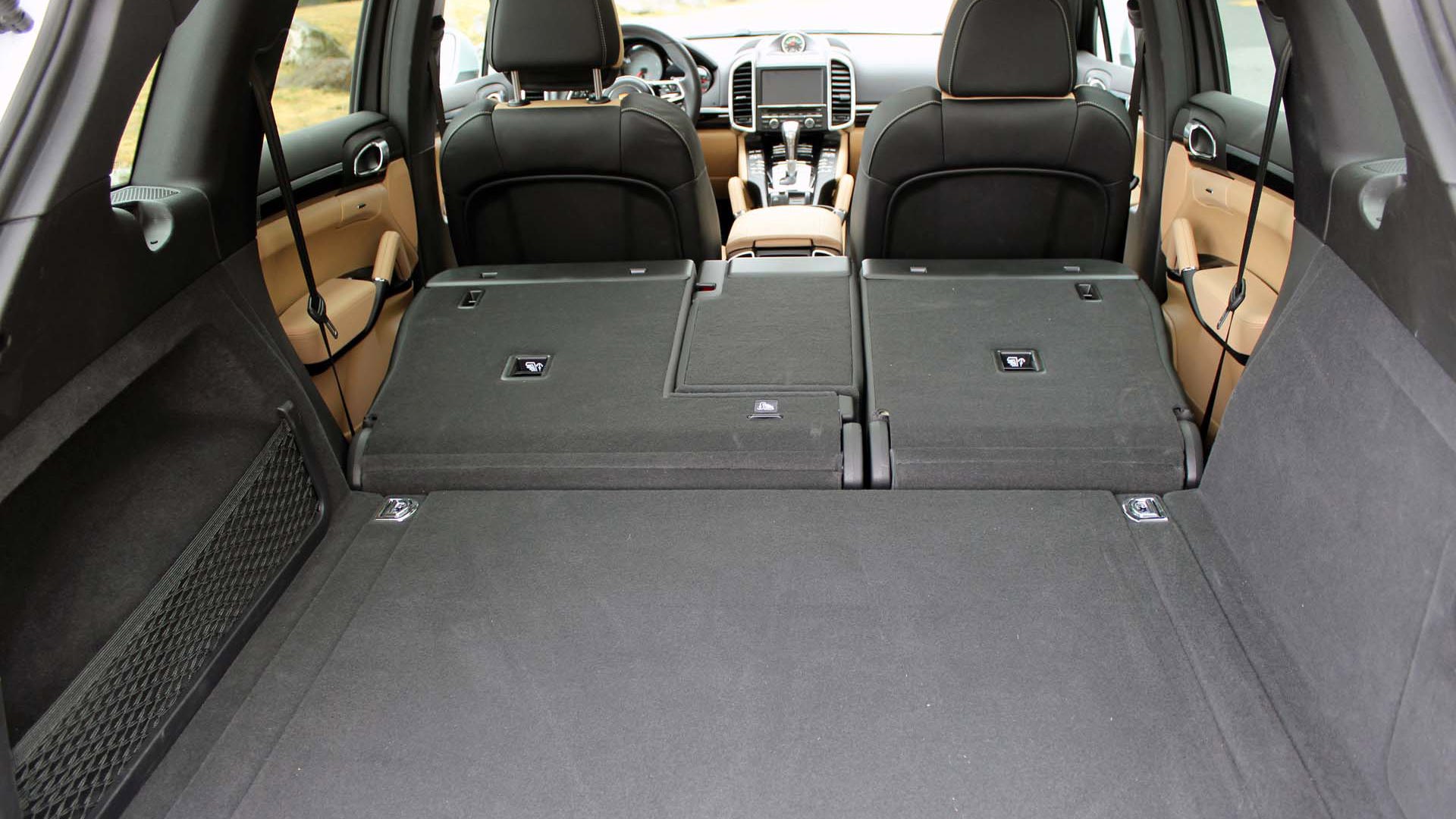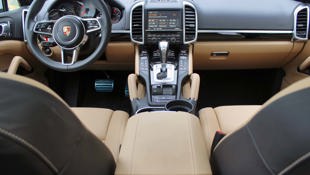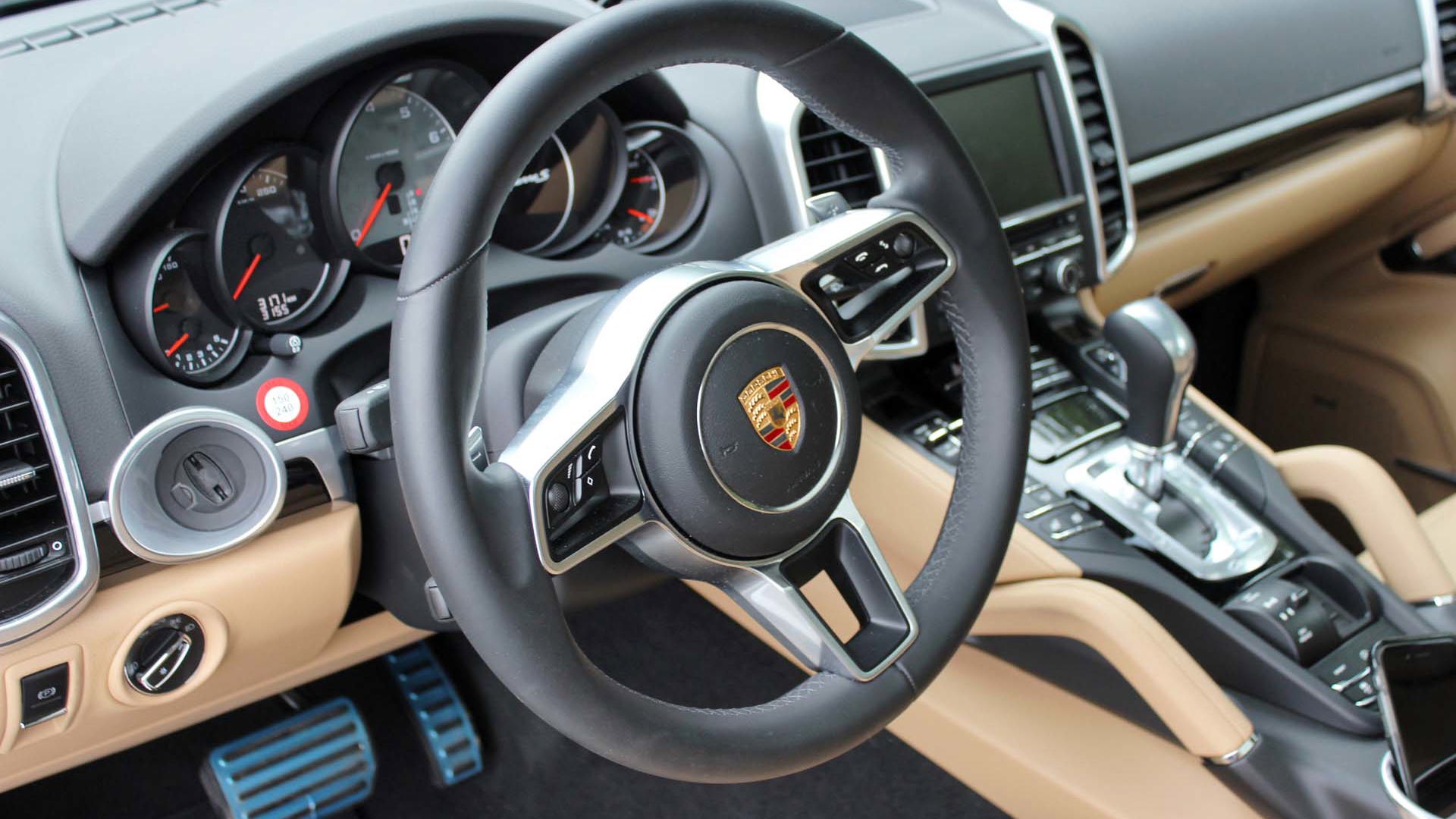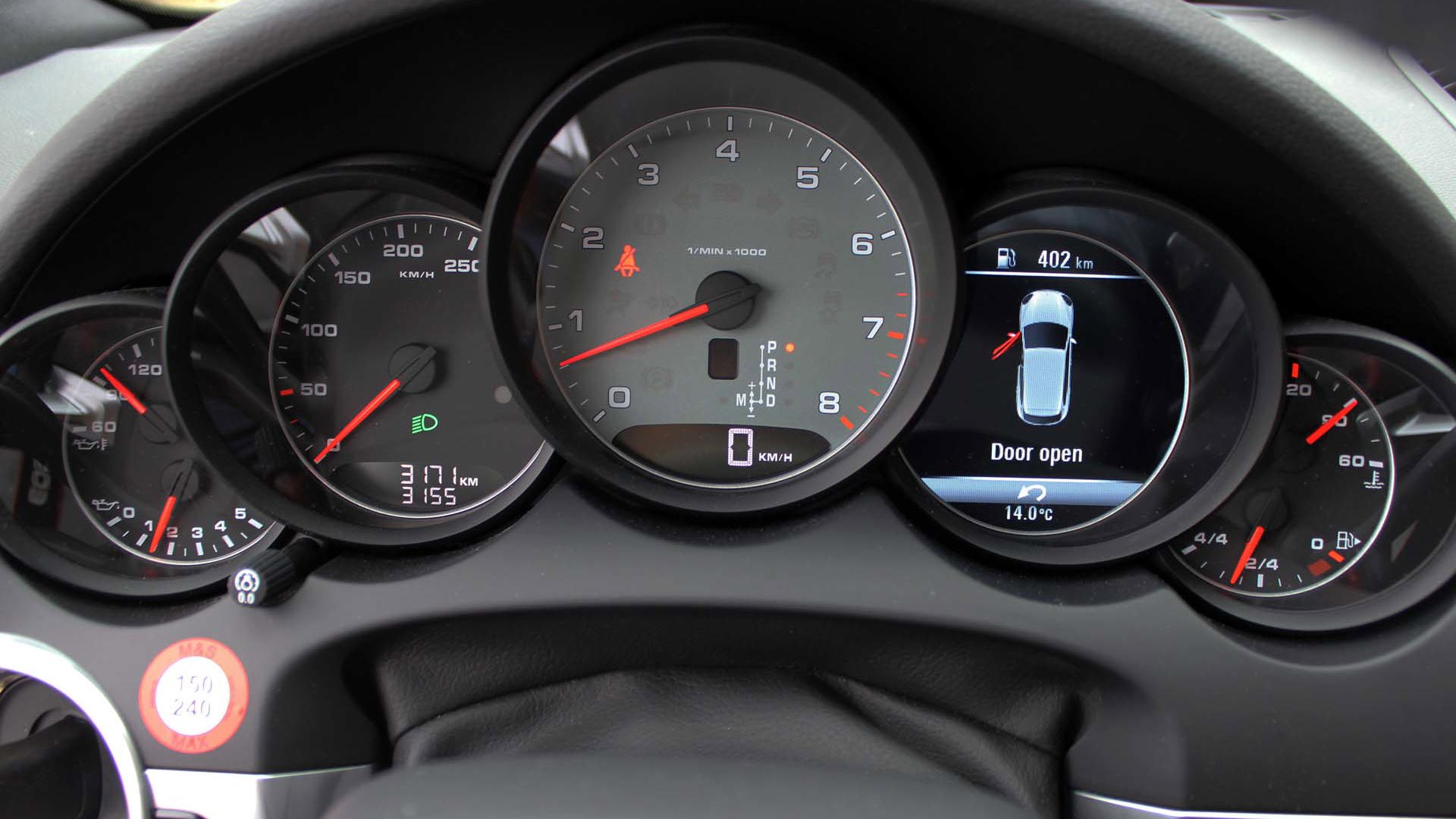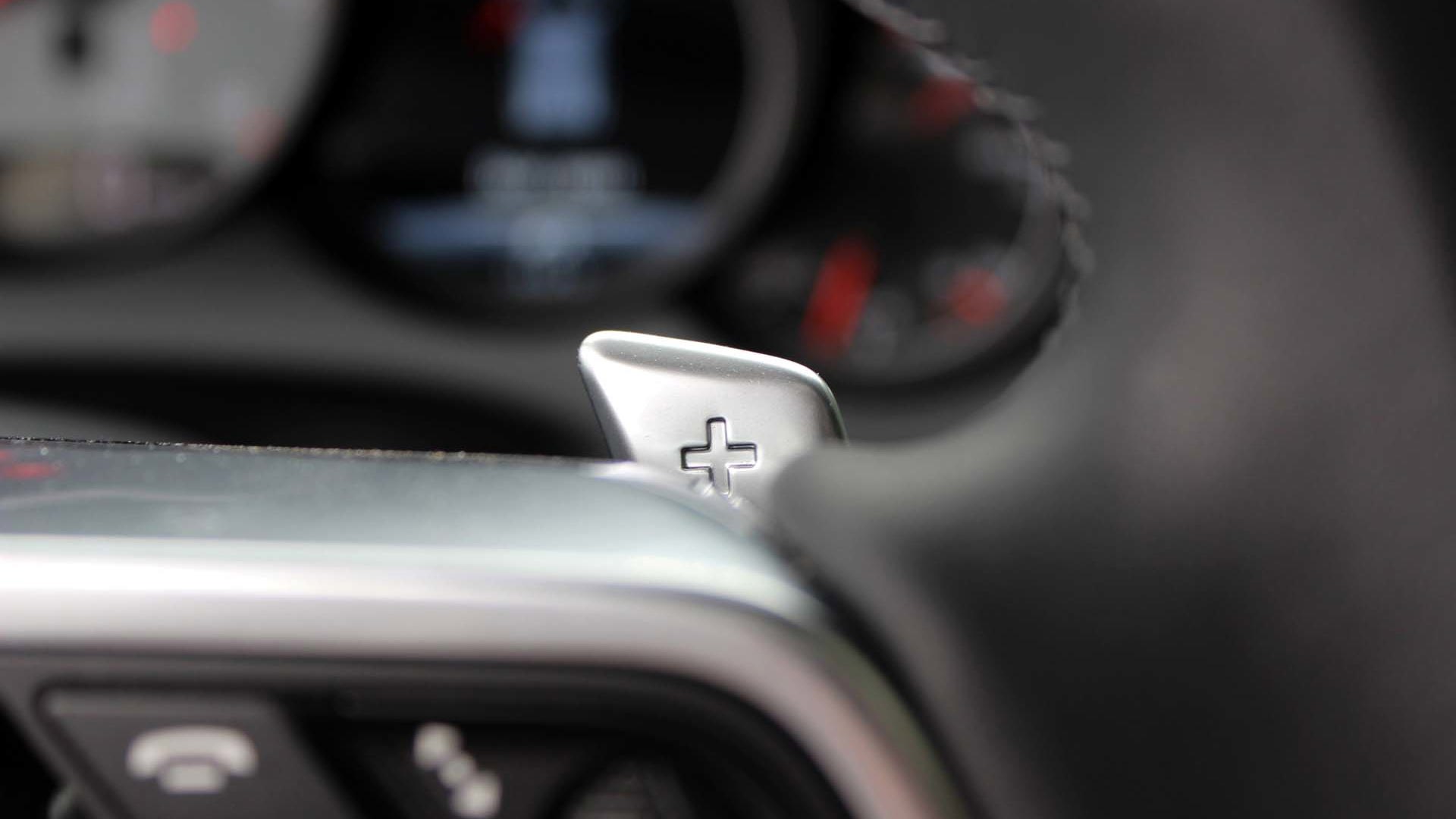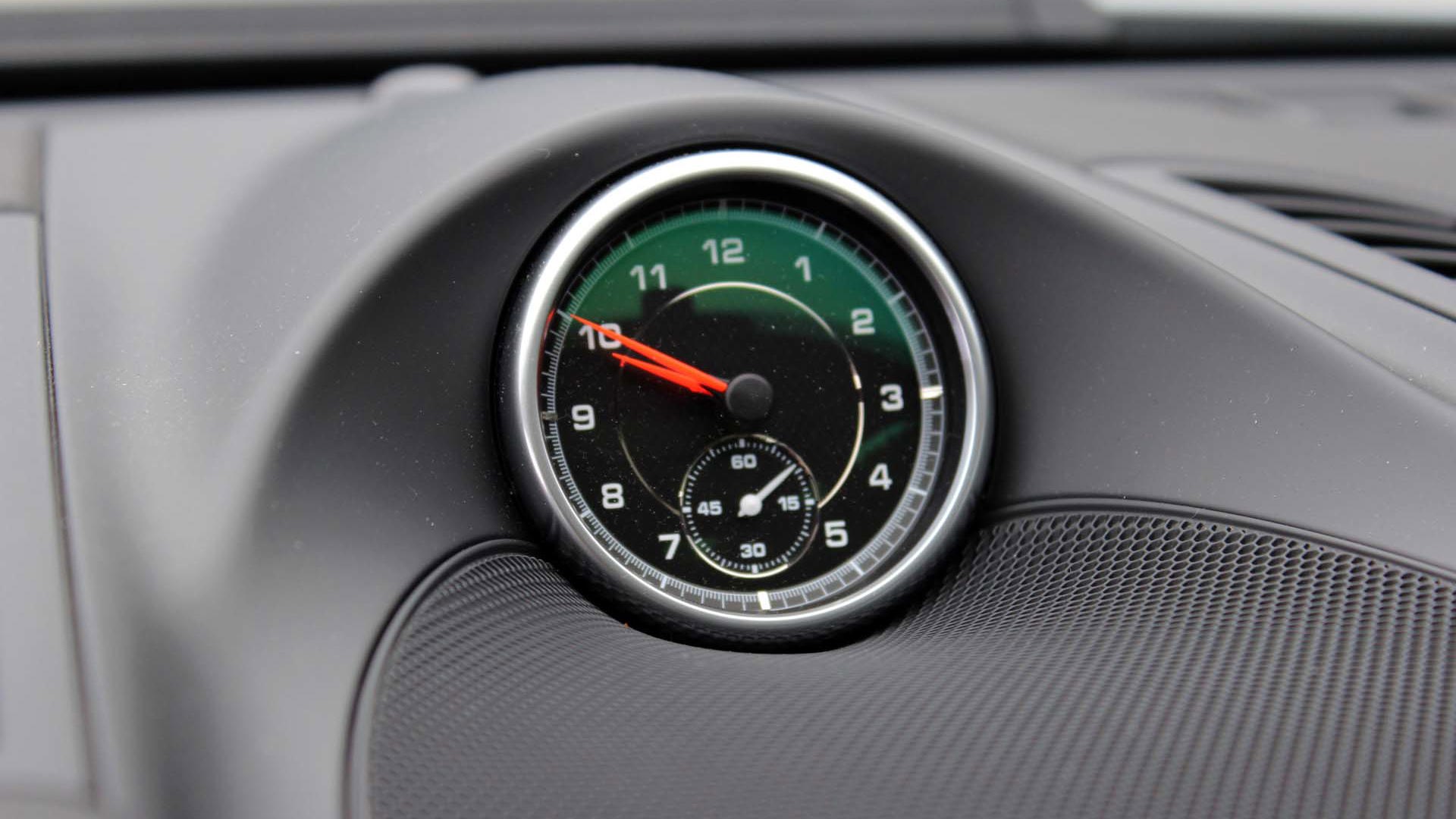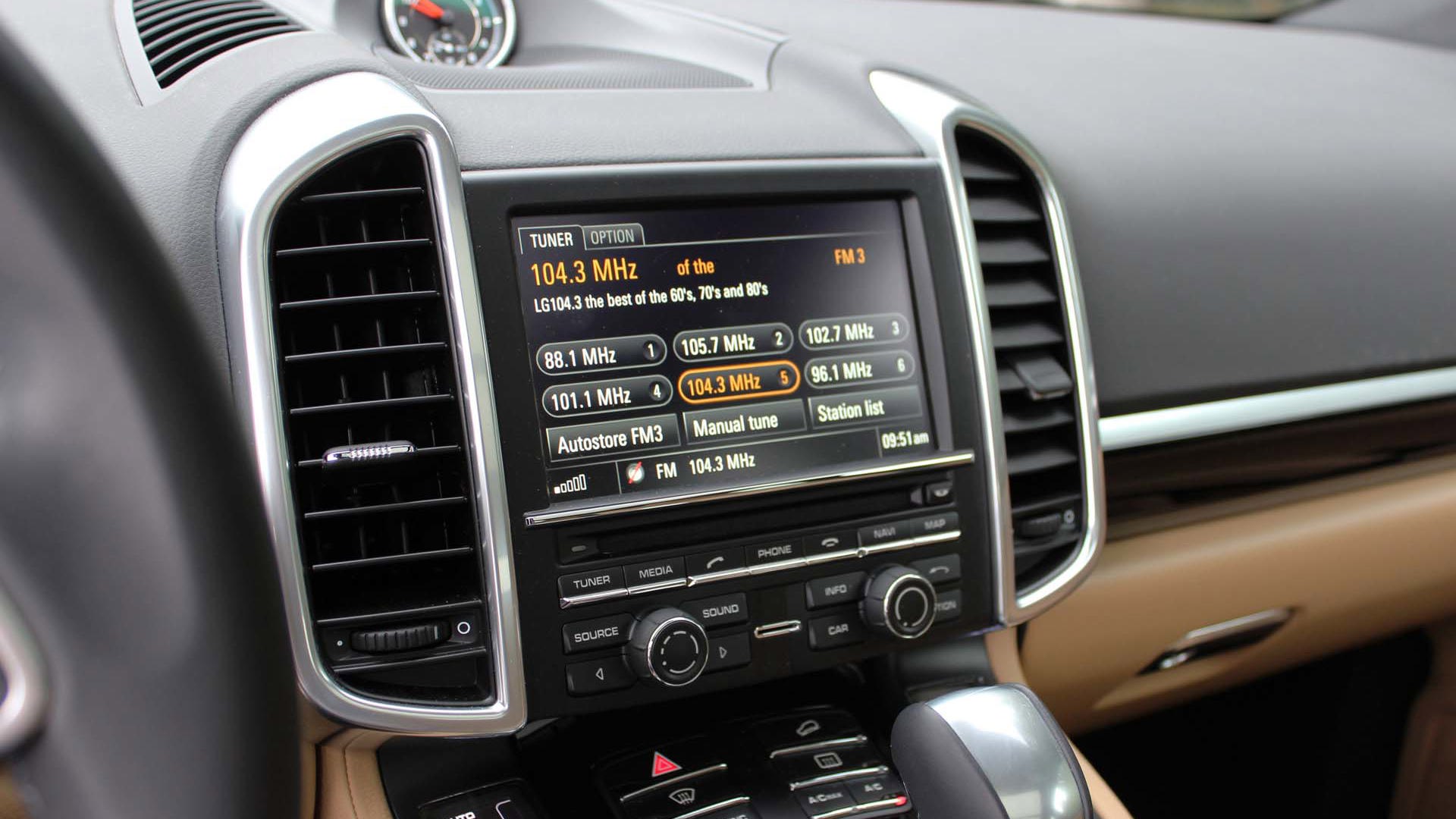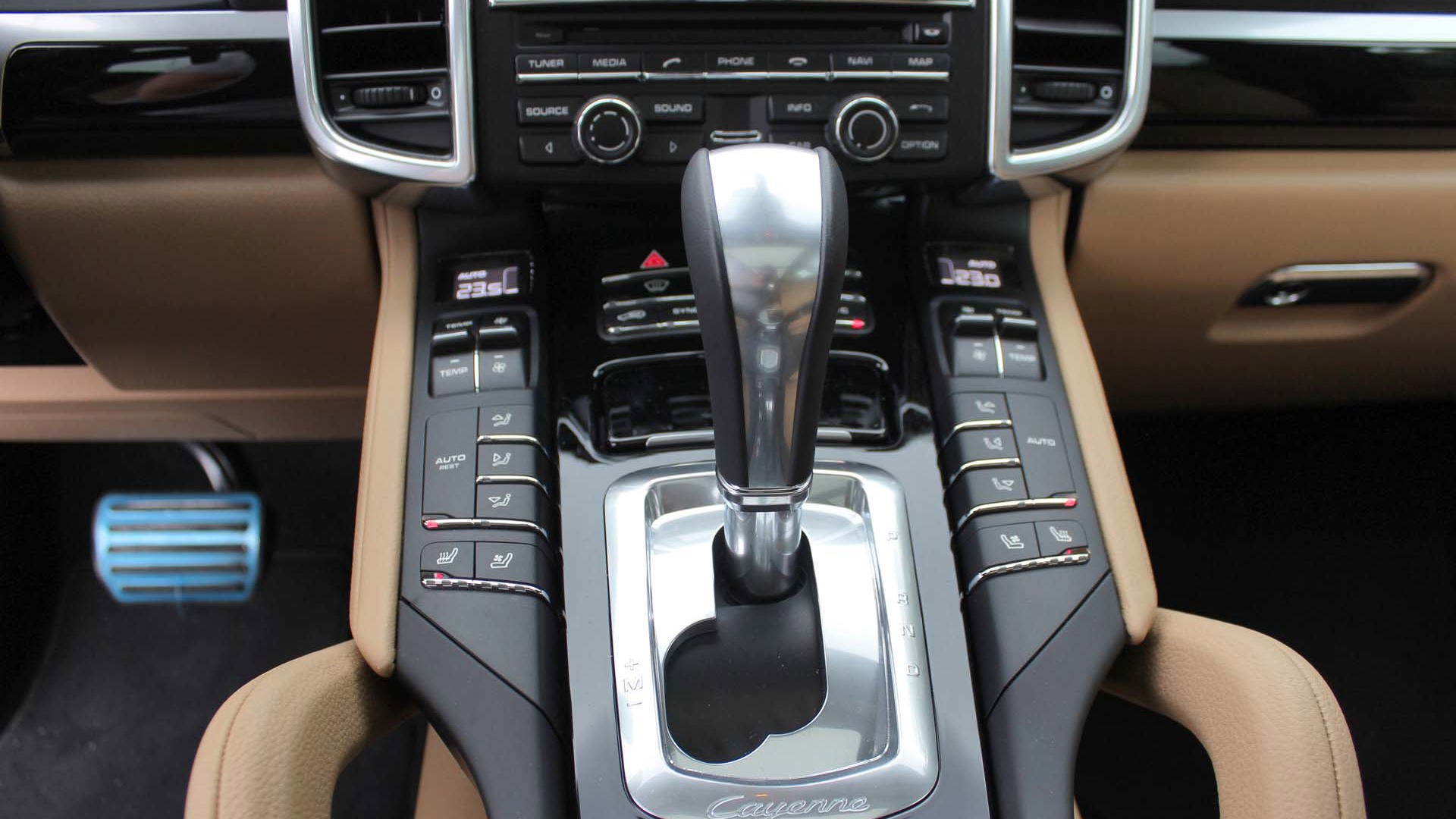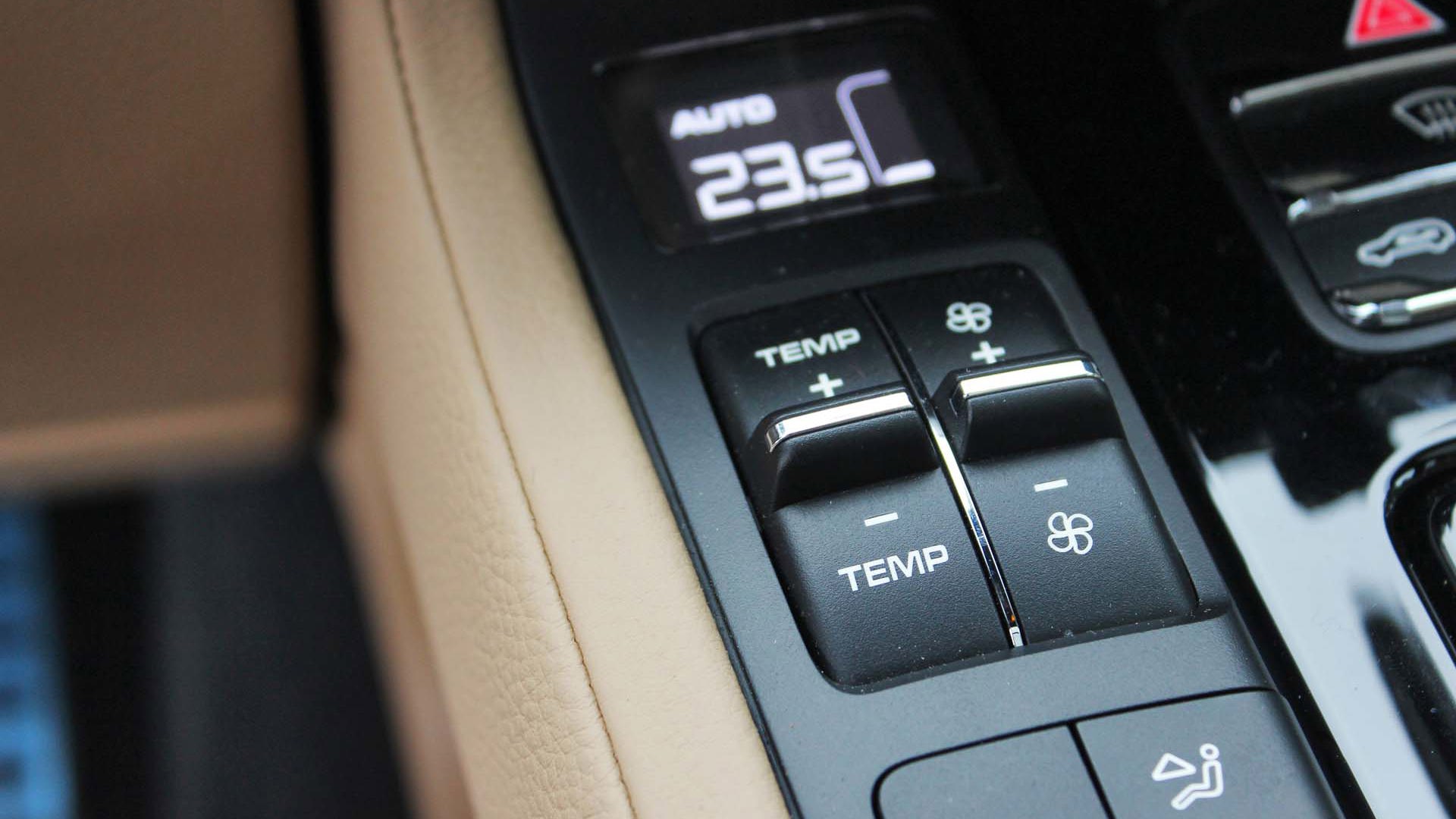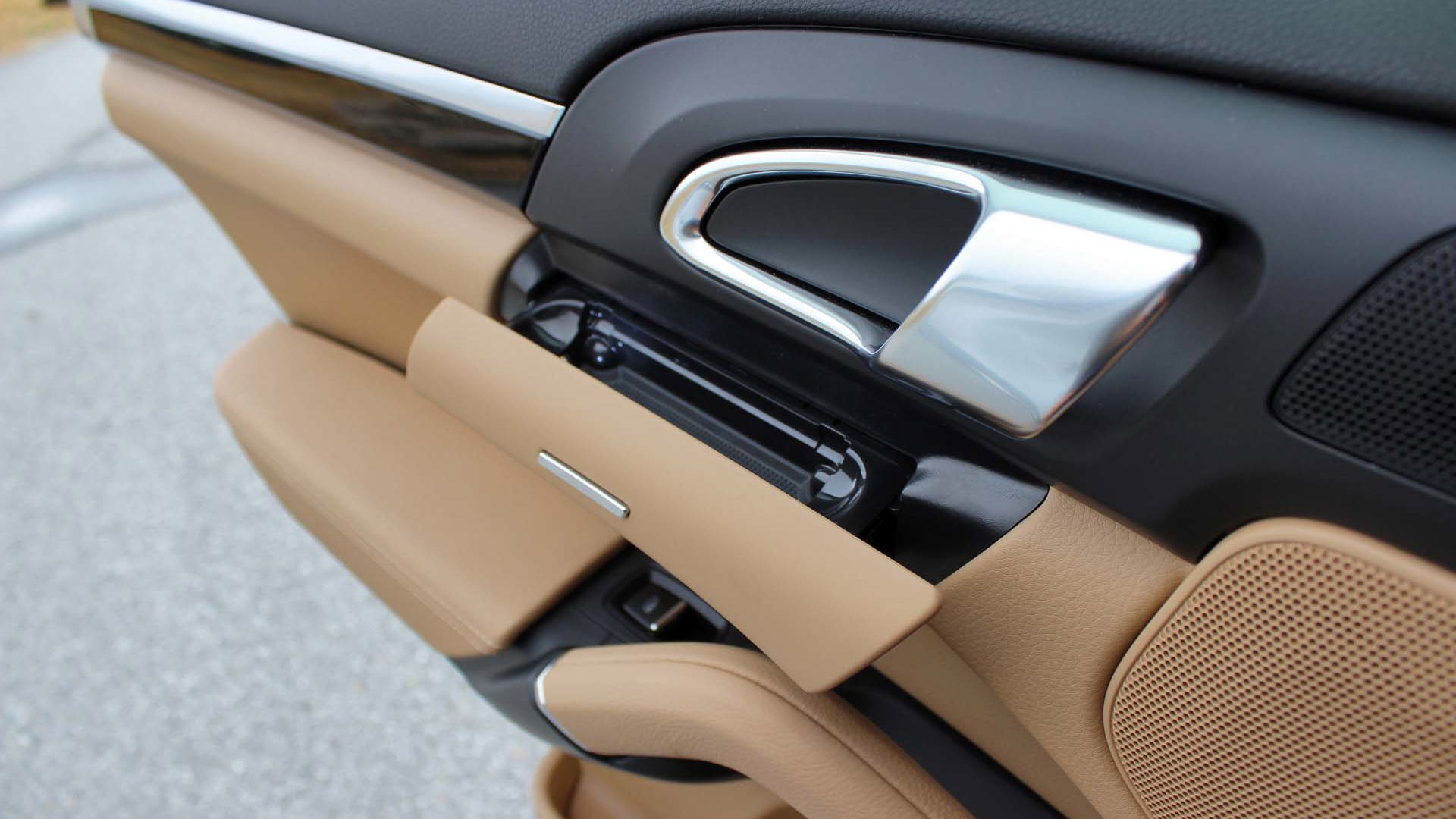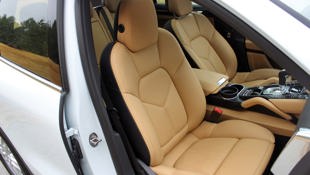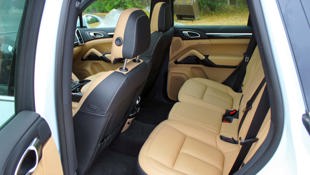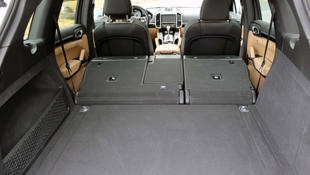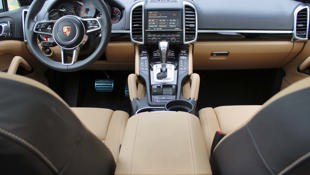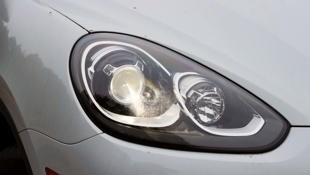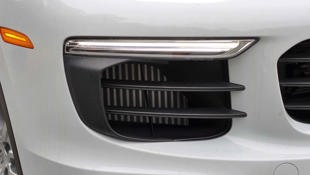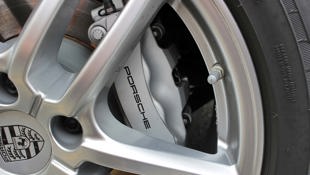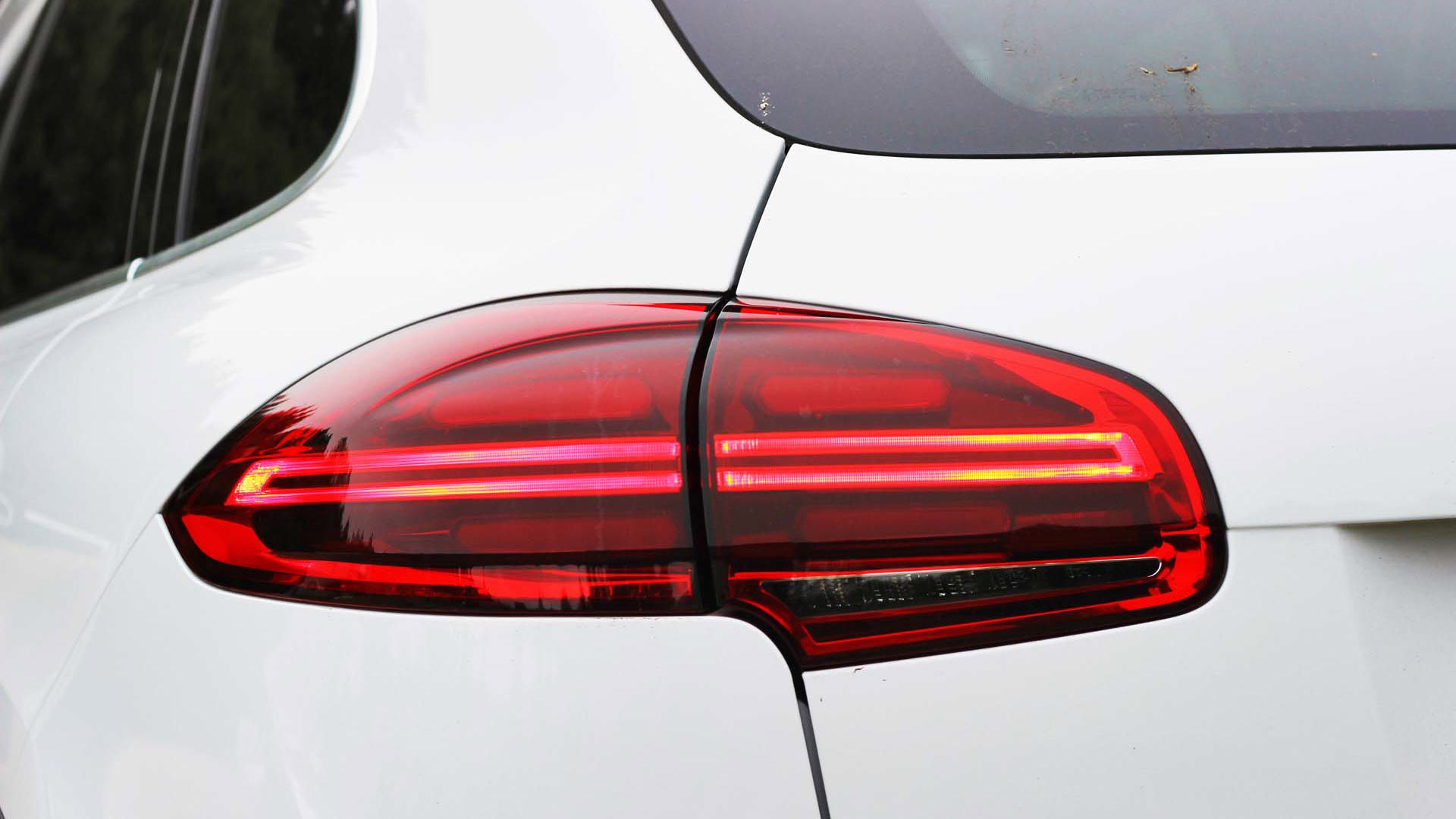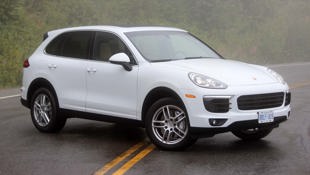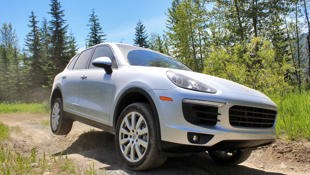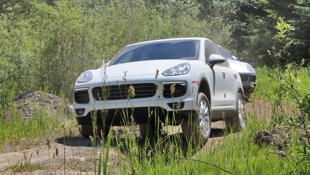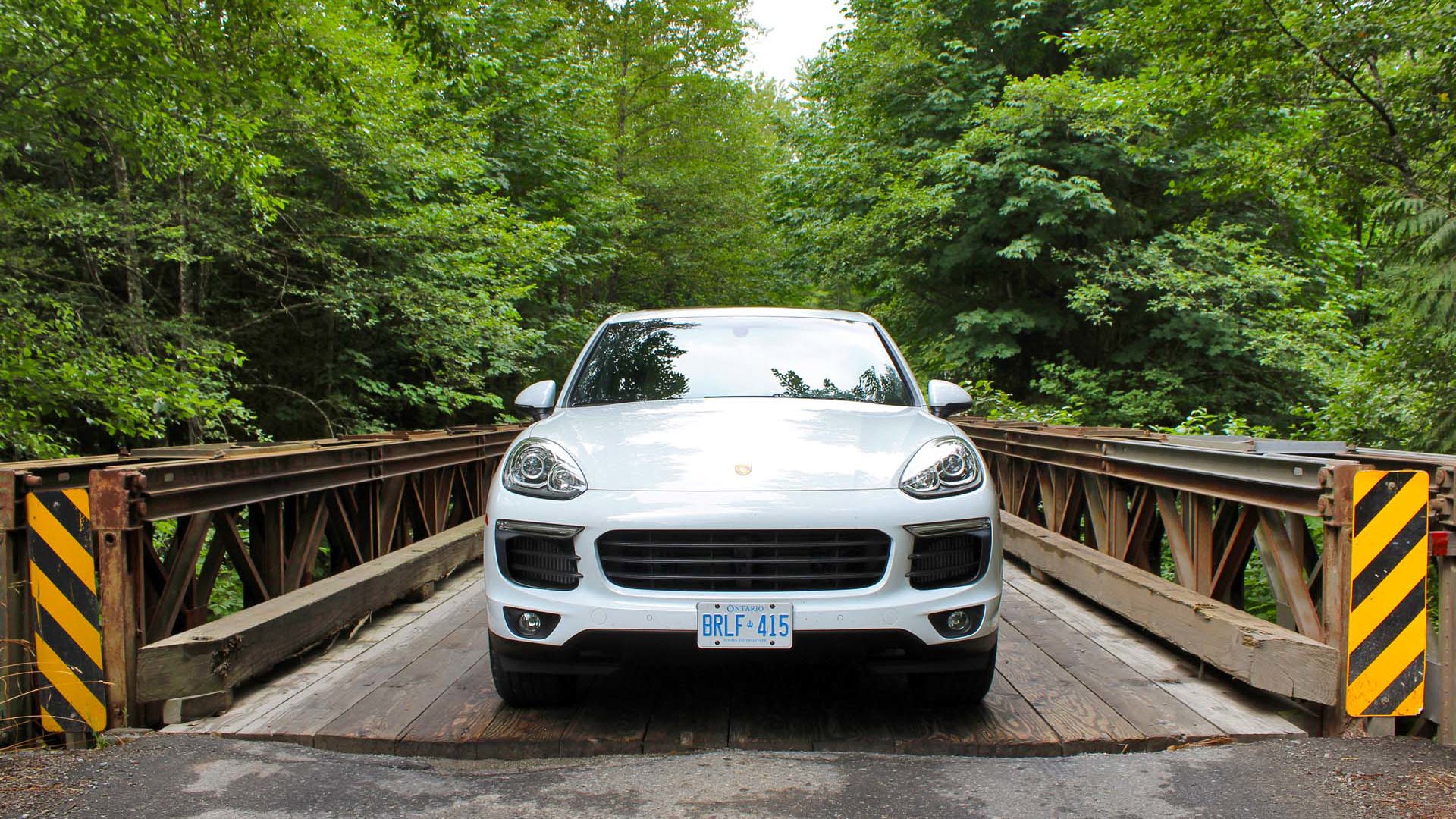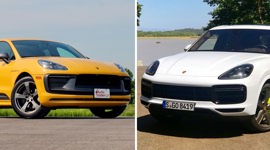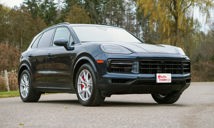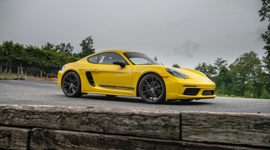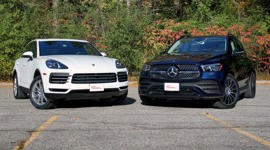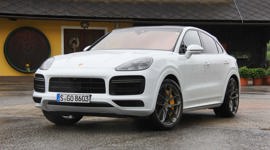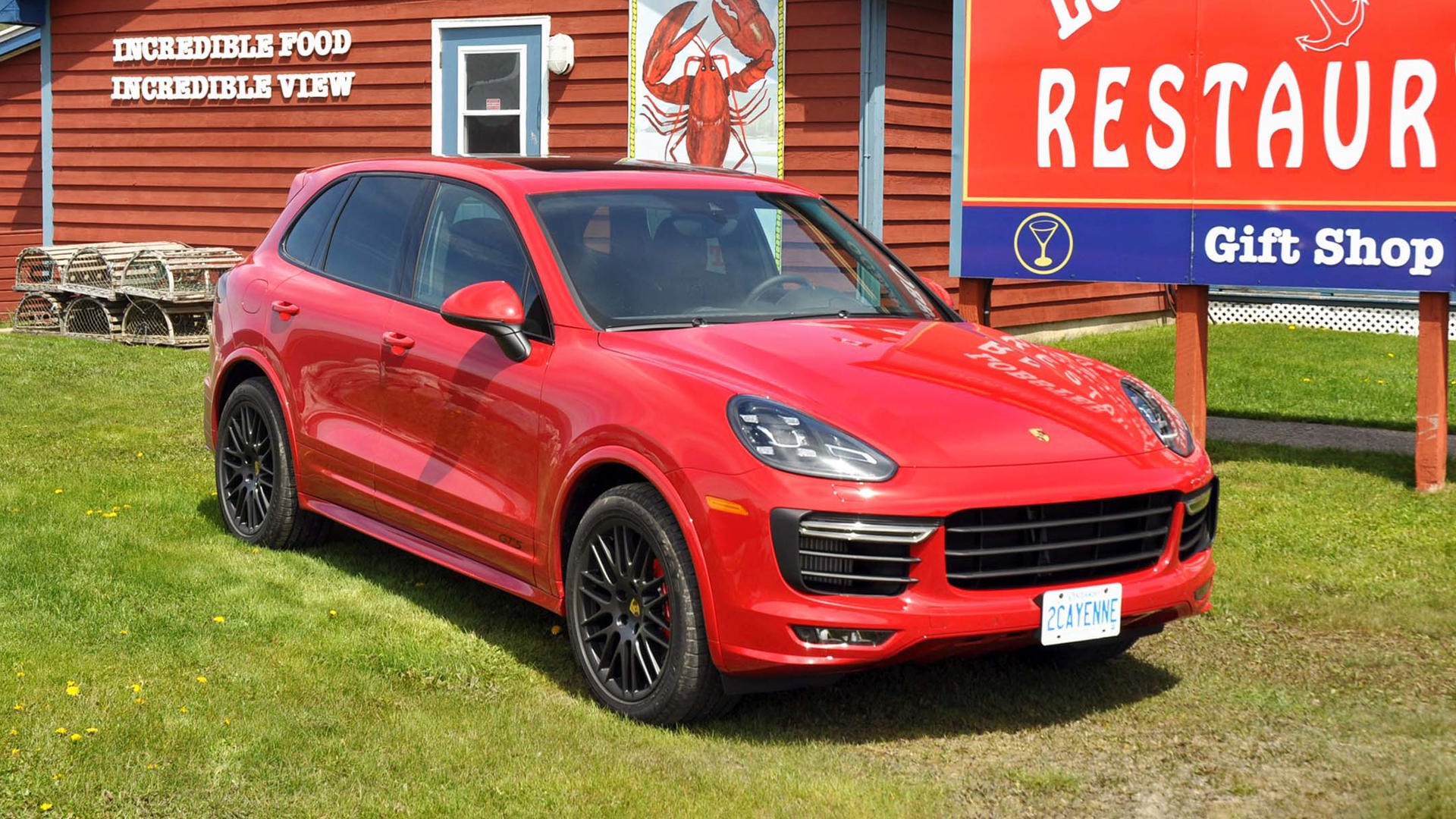Say what you want about the Cayenne; maybe you don’t believe it’s a “true” Porsche, perhaps because its engine’s out-front and it isn’t a sports car. Maybe you don’t like its looks. Maybe you bemoan the fact that it shares underpinnings with other vehicles in the VW Group.
Whatever you may think, it’s hard to contest the fact that the Cayenne played a huge part in the resurgence of the Porsche brand.
Whatever you may think, it’s hard to contest the fact that the Cayenne played a huge part in the resurgence of the Porsche brand, doing its part to drag the Stuttgart firm back into the black after some rocky, rocky times. Even today, while Porsche is alive and well, big sellers like the Cayenne (and Boxster, and Macan, and Panamera) are what make it possible for the manufacturer to continue to build the cray cray stuff; the Cayman GT4, for example. Or the 911 GT3. Or even 918 Spyder, with which this newly facelifted Cayenne actually shares a few stylistic elements, if you can believe it.
For 2015, Porsche’s SUV has been given a squatter stance, better detailing inside and out and a handful of aero upgrades to quiet the ride, and help the Cayenne scythe through the air ahead.
The most obvious stylistic addition are the new taillights; I couldn’t quite put my finger on it at first, but when you consider a previous-gen model, the difference is quite marked. The “four point” LEDs that now make up the rear lights are a little longer, a little narrower than what we saw before, and a nice crease connects them, lowering the tailgate’s profile a little bit. Now, the rear lights of the old car look a little too small and rounded, adrift in the big, metal sea that is the tailgate panel.
To further lower the stance, the twin tailpipes have been moved further to the corners of the rear valance, which looks mighty good, if I’m honest.
What's new in 2016: 2016 Porsche Cayenne GTS Test Drive
Up front, the changes aren’t quite so marked, but worth noting nonetheless. The air intakes have grown, and they now accommodate something called “Airblades” on their outside edges, and their function is twofold: they curb turbulence around the wheels for a smoother ride, cooling the engine bay while they’re at it. Yes, they look a little cheap in their black plastic finish (a satin chrome look may be better; hard to know) but it’s nice to know they serve a function. Plus, did everyone love the “Sideblades” on the Audi R8 when that car first appeared? Judging by how many I see that have had them coloured to match the body, I’m going to say they still haven’t quite come around to it, as popular as that car is.
Other new features include special bi-xenon headlights (included in our tester’s $5,440 Premium Package, along with 14-way power seats, back-up camera, panoramic sunroof, variable power steering, and front seat ventilation—a package I most definitely would spec) whose four-LED treatment look properly modern and just a little imposing, and newly-placed hood shutlines that provide a more sculpted look to the front-end.
Inside is where you’ll find that inspired-by-918 stuff I was talking about, in the form of an all-new steering wheel, based on the item in Porsche’s hybrid supercar. It’s a welcome addition; the Cayenne’s wheel has always been dinner-plate huge and ungainly, and decidedly not in-keeping with the car’s sporting nature.
The new wheel, on the other hand, is awesome to grip, doesn’t impede forward visibility as much and just looks of higher quality. I love it, and I’m glad they added it.
Other new features include optional ventilated rear seats (which ours didn’t have, although it did have heated rears, a $600 option), soft close doors, and a heated windshield. Unlike examples from Range Rover and Volvo, however, the Porsche doesn’t require squiggly lines streaming down the glass to perform this duty. Neat stuff.
Being a Porsche, the seating position is to-notch thanks to 14-way front seats and power telescoping steering wheel. That massive sunroof, meanwhile, makes for a fantastically airy cabin that caught the attention of almost every back seat passenger we hosted.
Some things about the cabin are a little questionable, however; the front armrest storage bin, for example, is oddly shaped and shallow to the point you can barely get a sunglasses case in there. The way the armrest lifts, meanwhile, takes a little getting used to. You have to ensure that it locks in the open position, which comes only after it feels like you’re about to break the hinges on the thing.
The rear seats fold flat, but again, it’s not enough to just flip the lever astride of the bottom cushion; if you want them going all the way flat, you have to force the seat back to lock with a little elbow grease. The seats are nice and flat when folded, however, and they permit up to 1,780-litres of cargo space once down. The rear cargo is a little tight and shallow if you leave them up, though, just barely enough for two adult-sized hockey bags.
Of course, this is a Porsche, and while seating positions and interior accoutrements are all good, you have to wonder: how does it drive?
Power comes from a twin-turbo V6 to the tune of 420 horsepower, putting it right on par (or above) similar entries from BMW in the form of the X5 xDrive35i, or Mercedes in the form of the ML400 4Matic; in fact, the Cayenne even beats the V8-powered ML550 on the hp front.
It’s clear as soon as you depress the throttle that power is not an issue; get past a small amount of turbo lag, and the proceedings continue at a fast rate; 0-62 m.p.h. arrives at a claimed 5.5 seconds and while I didn’t measure that myself, I can’t say I was left wanting in the acceleration department. Even without the modifiable exhaust baffling that comes a part of the $6,380 Sport Package it sounds good, too although you’re never going to hear it like you would in a 911, for example. That’s because while the Cayenne S is a sporty thing, I’m not sure how many buyers are going to opt for it because they just have to hear the exhaust burble and crack on upshifts. Still, while that may not happen with the S as it does with the GTS or Turbo S models, it is still fun to make use of the shift paddles to get a more involving ride.
I’m also not sure how many are going to really test the handling package to the levels we did as part of the Porsche Performance Tour. There, in addition to trying a brace of Porsche sports cars on the road and track, we also took the Cayenne S on an off road track, normally reserved for dirt bikes in the summer, and snowmobiles in the winter.
It was there, on a host of sharp inclines, split mu terrain and even a stream or two that we were given a firsthand look at just what these beasts are capable of.
For starters, there are a total of three ride heights (plus a fourth access height) to select from, the most extreme of which are to be saved for very specific situations; the lowest height, for example, provides easier access and loadabilty. It’s only available when stopped, however, with the Cayenne reverting back to the “normal” setting as soon as the system senses movement.
The highest height, meanwhile, allows for 273 millimetres of ground clearance; it’s quite a jump over the standard setting, so much so that you can actually see the nose lift ahead of you; it almost makes the cartoony-looking graphic that appears in the gauge cluster as you modify the ride height unnecessary. Not to mentions that from the outside, it’s so noticeable that it looks like the Cayenne is, quite literally, on stilts when in the highest setting. Of course, you can only do about 30 km/h when in this setting, but would you really wanting to be going much faster than that if you were climbing 15-degree inclines and navigating through softball-sized stones and foot-deep ruts? Didn’t think so.
On declines, hill-descent control is on-hand so if you choose, you can stay focused on what your hands are doing as opposed to what your feet are up to, which is nice to have in these conditions. We were given a few exercises to show just what they wre capapble of; in one, we were asked to stop the Cayenne in in the middle of a steep climb—robbing us of any momentum we may have gained—and to start up again. A little hesitation as the AWD system decides where to send the power, and we were off, as we would be in a Jeep Wrangler.
While the additional off-road abilities provided by the $4,550 Air Suspension w/PASM Package may not be to everyone’s tastes, the self-levelling air suspension also included is a boon for all environments, whether you’re on a bendy b-road or just navigating the urban jungle.
I guess that’s the moral of the story with the Cayenne S: its well-roundedness. It can ferry the fam around, but it can also really shift as both speeds and turn variety increase. In the end, maybe people aren’t buying the Cayenne just to have the Porsche emblem on their SUV; they’re buying it because it’s worthy of that emblem.
Competitors:
Acura MDX
Audi Q7 3.0 TFSI
BMW X5 xDrive35i
Mercedes-Benz ML400/ML550
Land Rover Range Rover Sport
